100 Facts So Crazy You Won’t Believe They’re Actually True

The world is a strange, surprising place, in ways large and small, serious and trivial. Many times, things you may have assumed to be true (for years!) might be totally false. Other times, what you long believed to be a myth is actually fact. From an earthquake-proof cathedral that’s made almost entirely of cardboard to an ancient Egyptian mummy with a modern-day passport, this list of crazy-but-true facts is sure to challenge your preconceived notions about the world.
1
The shortest commercial flight in the world lasts just 57 seconds.

The Loganair flight between the two Scottish islands of Westray and Papa Westray lasts just 57 seconds. At a distance of 1.7 miles, it’s the shortest commercial flight in the world. However, because the trip is made via one of two eight-seater planes, the exact time of the journey could take a bit longer if there are strong winds. Loganair claims it takes less than a minute “in a favourable wind”—and here’s a video to prove it.
2
Elephants can “hear” with their feet.
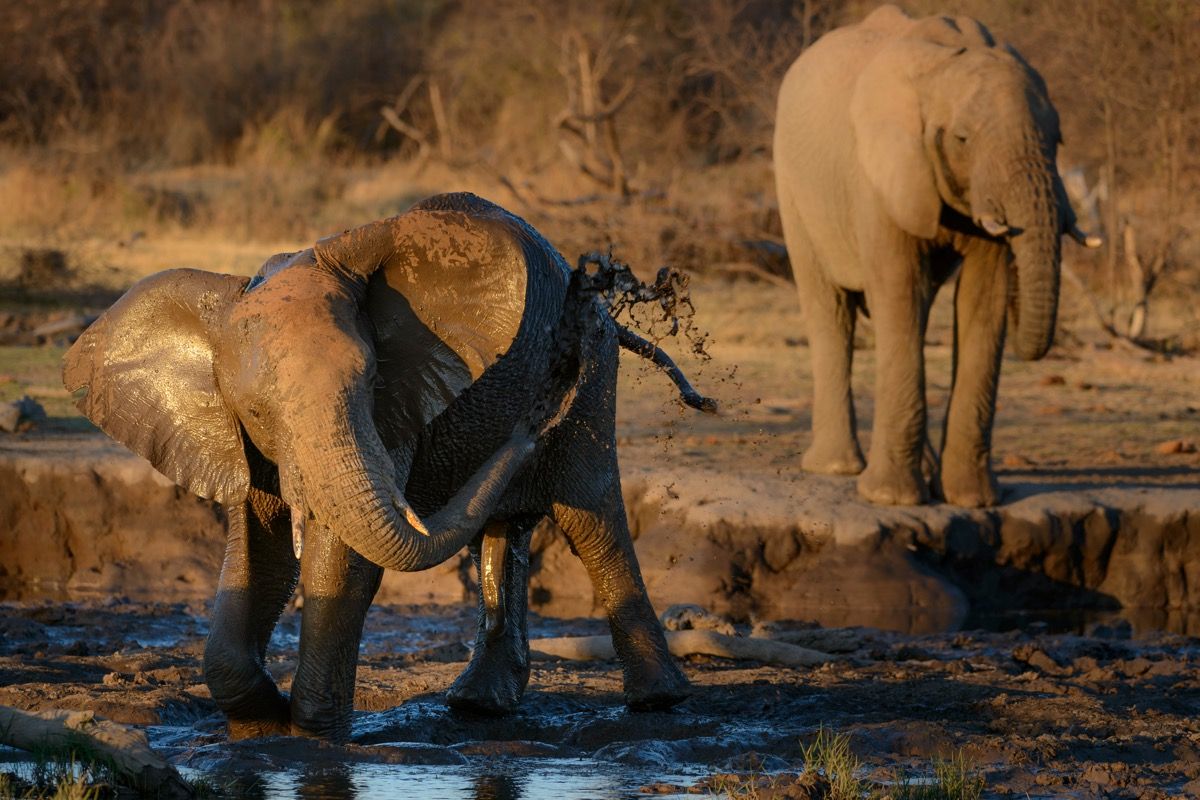
You’d think that with those enormous ears, elephants would be able to pick up on every sound both near and far. But it turns out that to detect distant noises, the animals also “hear” with their feet.
“Normally, they would hold their big ears out like a parabola and scan back and forth. But to detect distant noise and vocalizations, they’d freeze and lean forward and put weight on their front legs,” Caitlin O’Connell, the Stanford University research associate who discovered the phenomenon, told SFGate. “Sometimes they’d even lift up a front foot. All of them would do this at the same time—it was too coordinated to be a coincidence.”
3
You might soon be able to compost yourself in the U.S.

When you pass away, you could choose to have your body buried or cremated. But soon, there may be another option: composting. In April 2019, a bill was passed in the state of Washington to make “natural organic reduction” a legal option.
The process can turn a human body into compost within weeks by giving “the natural process of decomposition a gentle boost,” according to IFL Science. “Bodies are put in a temperature-controlled rotating vessel along with some woodchips, straw, and gases. After the process is completed, a cubic yard of soil per person is left, which loved ones can then take home to grow a tree or a plant from if they so wish.”
4
The world’s largest blanket didn’t even fit into an indoor arena.

If you have someone in your family who likes to knit, then you’ve likely received a handmade blanket as a gift at some point. But perhaps the next time the knitter in your life wants to put their wool to good use, they could try to create something like the 21,471.95-square-foot blanket that was made by more than 1,000 people from 32 different countries in August 2018. The record-setting blanket was so big that it filled the entire indoor arena in the Ennis Showgrounds where it was displayed, even overflowing up the walls. The blanket was then divided up into smaller blankets, which were donated to the Irish Red Cross.
5
The coast of France has had “Garfield” phones washing ashore since the 1980s.

In the 1980s, phones in the shape of Garfield, the cartoon cat, began washing up on the Iroise coast in the Brittany region of France—but nobody knew where they were coming from. Then, 35 years into the mystery, a local farmer named René Morvan revealed that a container ship carrying the feline phones had been hit by a storm and ended up in a nearby secluded sea cave. “You had to really know the area well,” he told Franceinfo. “We found a container aground in a fissure. It was open. Many of the things were gone, but there was a stock of phones.”
6
Shakespeare’s parents and children were likely illiterate.

William Shakespeare remains one of the most famous playwrights and poets of all time. And while the Bard attended grammar school to master reading, writing, and Latin, it’s believed that his parents and children were almost entirely illiterate. The ability to read and write wasn’t necessary during the Elizabethan era, and although Shakespeare’s father, John, may have had a basic level of literacy, he signed his name with a mark instead of his full name. His daughters, Susanna and Judith, are thought to be totally illiterate, although Susanna could write her signature.
7
Japan uses sunflowers to clear up radiation.

When a tsunami hit the Fukushima area of Japan in 2011, the radioactive fallout from the nearby nuclear power plant contaminated the land and water for 30 miles in every direction, according to The Telegraph. Even outside the evacuation zone, the soil shows traces of radiation, which can wind up in any food grown there. To help rehabilitate the land, Buddhist monks began passing out seeds for field mustard, amaranthus, cockscomb, and sunflowers—all plants known to soak up radioactive particles. More than 8 million sunflowers were planted within the first six months after the disaster, reports Inhabit.com.
8
Canadians wanted to rename the Northwest Territories “Bob.”

When Canada considered changing the name of the Northwest Territories in 1996, the public was asked for their input. And although various aboriginal names were considered, “Bob” became the second most popular choice. David Hamilton, the clerk of the N.W.T. Assembly, told the CBC, “It got caught up in a friendly hype rather than a serious hype.” Fortunately (or unfortunately), the name-changing debate was set aside before “Bob” was put to an official vote.
9
An adult’s blood vessels could circle the equator four times if they were laid end to end.
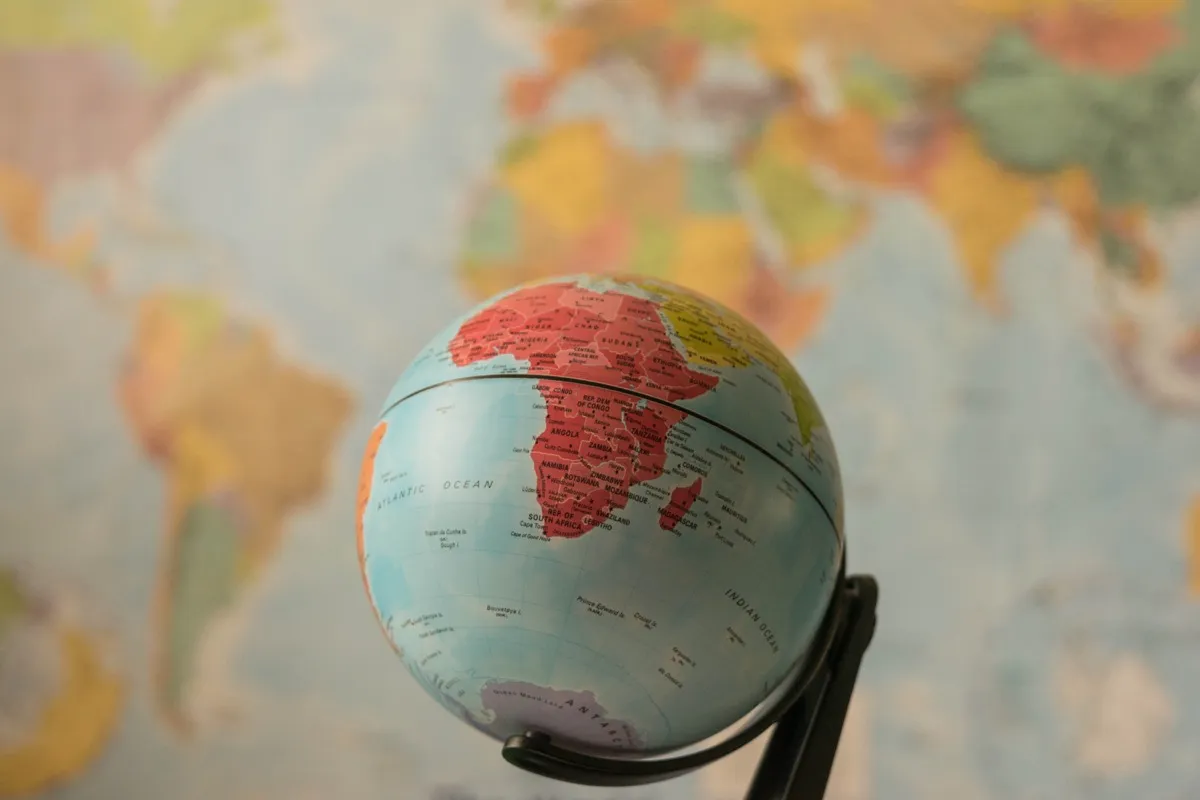
The human body may seem minuscule compared to the size of the Earth. But adults have so many blood vessels that if you laid them end to end, they could circle the planet’s equator—which is 24,901 miles—four times, according to National Geographic!
10
If you tried a new variety of apple every day, it would take more than 20 years to try them all.

If you’re the kind of person who appreciates variety and would love to taste-test a new type of apple every day of the week, then you’re in for a decades-long endeavor. It would take you more than 20 years to try each of the 7,500 varieties of apples in the world.
11
A humpback whale was found in the middle of the Amazon rainforest.
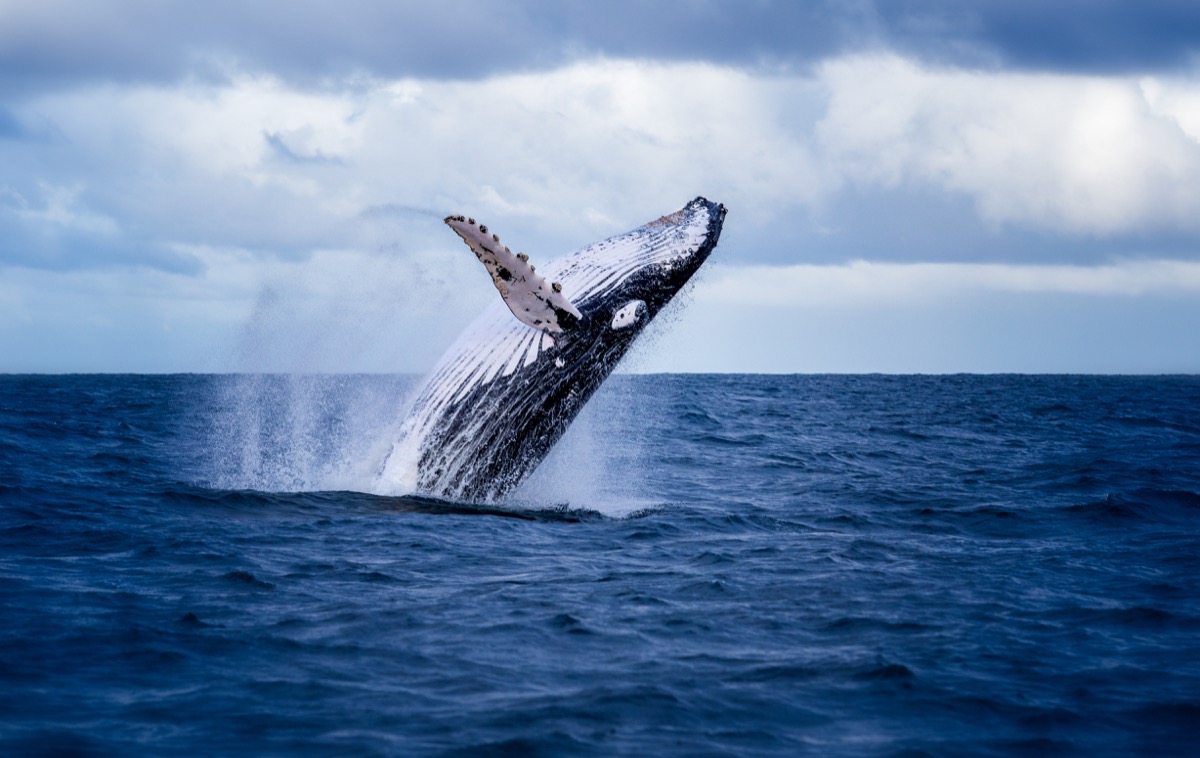
It’s awe-inspiring to spot a humpback whale in the middle of the ocean, but it’s jaw-dropping to see one in the middle of the Amazon rainforest. Yet that’s exactly what happened in February 2019 when locals came across the body of what was believed to be a one-year-old humpback in an area of mangrove trees in northern Brazil. Laying 49 feet from the river beach on Marajó Island, the 26-foot animal’s cause of death is unknown, according to IFL Science. But researchers believe that the beached creature washed into the river mouth of the Amazon and was dumped on land as the tides pulled back.
12
The remains of the inventor of the Pringles can are in a Pringles can.
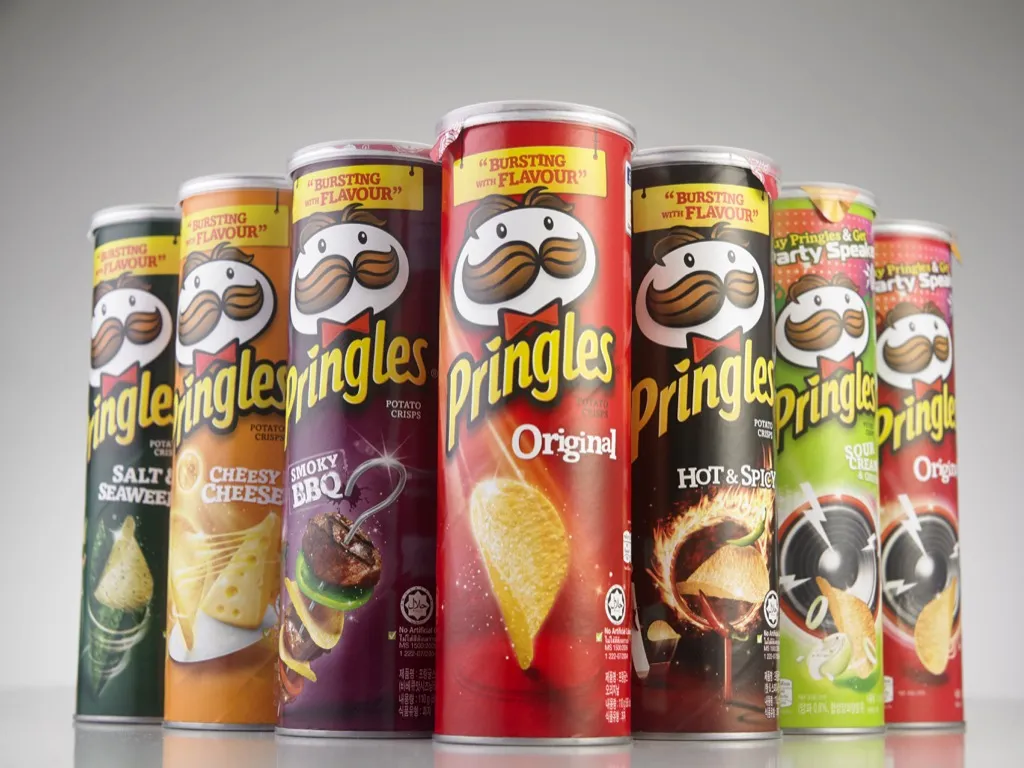
Fredric Baur was the man responsible for creating the iconic Pringles can. That’s why, when he passed away in 2008, his children honored his wishes to be laid to rest in one. “When my dad first raised the burial idea in the 1980s, I chuckled about it,” Baur’s eldest son told Time. But it turned out, Baur was serious. So after his death, his children stopped to buy a can of Pringles while heading to the funeral. His son recalled, “My siblings and I briefly debated what flavor to use, but I said, ‘Look, we need to use the original.’”
13
The Titanic almost experienced a collision days before it sank.

Just days before the Titanic struck an iceberg and sank in April 1912, it almost hit another boat, according to a letter from steward Richard Gedde that was written on the doomed ship’s stationery. Writing to his wife one day after setting sail from the United Kingdom, Gedde—who died in the tragedy—mentioned that as the ship was leaving the dock, it narrowly missed colliding with the SS City of New York.
“We got away yesterday after a lot of trouble,” reads the letter, which was auctioned in 2019. “As we were passing the New York and Oceanic, the New York broke her ropes and very nearly ran into us, but we just happened to avoid a collision … It must have been a trying time for the captain.”
14
There’s a mushroom with teeth that looks like it’s bleeding.

The hydnellum peckii mushroom, which is found in Europe and North America’s Pacific Northwest, looks like it’s oozing drops of blood. That’s why it’s also called the Bleeding Tooth fungus. “Despite its horrific appearance, the mushroom isn’t poisonous,” according to National Geographic. “We still wouldn’t recommend eating it—the taste has been described as very bitter pepper.” But that’s not all that makes this mushroom creepy. It also has tooth-like spines on the underside of the cap. Yikes!
15
Fergie voiced Charlie Brown’s sister, Sally.
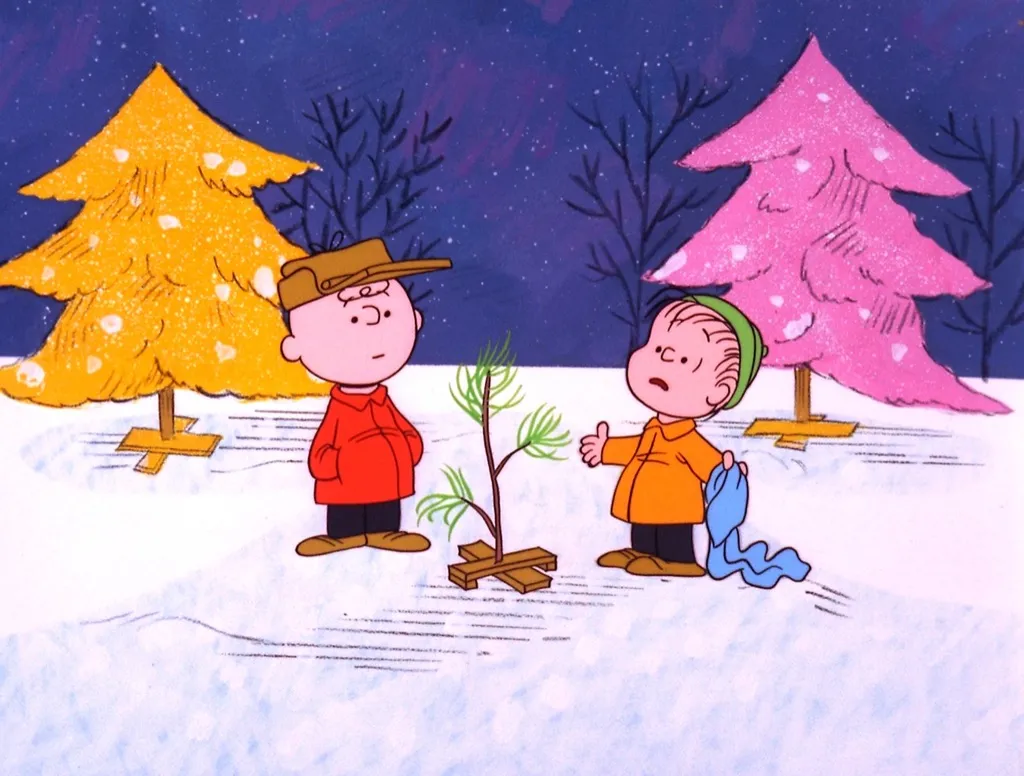
Before she was Fergie of the Black Eyed Peas, Stacy Ann Ferguson—better known as Fergie—was an aspiring child actor. In addition to starring on the show Kids Incorporated, Ferguson did voice acting work for the cartoons based on Charles M. Schulz’s famous Peanuts comic strips. She provided the voice of Sally, Charlie Brown’s younger sister, for two TV movies and several episodes of the animated series.
16
Pennsylvania’s official amphibian is the “snot otter.”
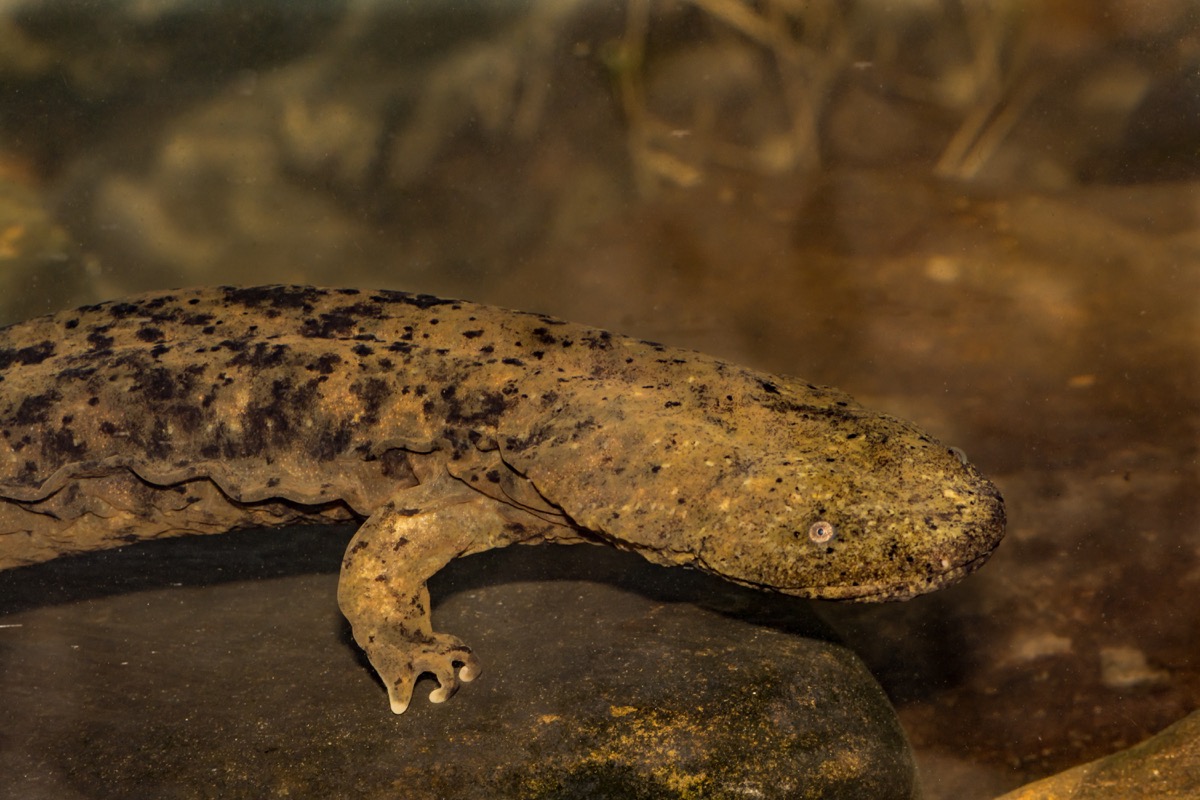
In 2019, Pennsylvania passed a law naming the eastern hellbender salamander (which also goes by the names Cryptobranchus alleganiensis, devil dog, Allegheny alligator, lasagna lizard, and snot otter) as the state’s official amphibian. And that’s great news for the two-foot long creature that’s facing a loss of habitat and a reduced population. Hopefully, this honor means that the snot otter’s numbers can soon increase.
17
Christie’s and Sotheby’s played “Rock, Paper, Scissors” to decide who would auction a $20 million art collection.

In 2005, both Sotheby’s and Christie’s were eager to sell Takashi Hashiyama’s $20 million art collection, which included works by Picasso, Vincent Van Gogh, and Paul Cézanne. But when Hashiyama couldn’t choose between the auction houses, he let a game of “Rock, Paper, Scissors” make the decision for him.
Both Sotheby’s and Christie’s were given a few days to select their weapon of choice. And while a Sotheby’s employee admitted to The New York Times that they “didn’t really give it that much thought” and “had no strategy in mind,” the team at Christie’s researched the psychology behind the hit-or-miss game and talked to 11-year-old twin “experts” (daughters of a Christie’s employee) who played it at school “practically every day.”
The twins offered an informed suggestion, with one telling the Times, “Everybody knows you always start with scissors. Rock is way too obvious, and scissors beats paper. Since [the auction house employees] were beginners, scissors was definitely the safest.” Christie’s went with scissors and won.
18
NASA was sued by three men for trespassing on Mars.

NASA has been working on Mars-related projects for years. But their exploration efforts faced an unexpected situation in 1997, when they were sued by three men for trespassing on the red planet. “We inherited the planet from our ancestors 3,000 years ago,” the men from Yemen told the Arabic-language newspaper Al-Thawri, according to CNN.
However, in an interview with CNN, NASA brushed off the suit. Their news chief, Brian Welch, told the outlet (while apparently trying not to laugh), “It’s a ridiculous claim. Mars is a planet out in the solar system that is the property of all humanity, not two or three guys in Yemen.”
19
Climate change is causing a massive feces-related problem on glaciers.

Climate change is causing all kinds of problems around the planet, including a weirdly nasty one on North America’s highest peak. As glaciers melt on Denali in Alaska, an estimated 66 tons of feces that was left behind by mountain climbers is thawing as the area comes out of a deep freeze. As Smithsonian Magazine so perfectly puts it, “that mountain of waste threatens to be unleashed as climate change warms the mountain and opens literal poop shoots in the surface of the glaciers.”
20
Cotton candy was invented by a dentist.

Cotton candy isn’t exactly great for your teeth. And that’s why it may surprise you to learn that the machine that makes this sweet treat was invented by a dentist named William Morrison. Though he looked after peoples’ teeth for a living, in 1897 he also worked alongside confectioner John C. Wharton to create a cotton candy machine, according to National Geographic.
21
Bees can live inside of your eyes.
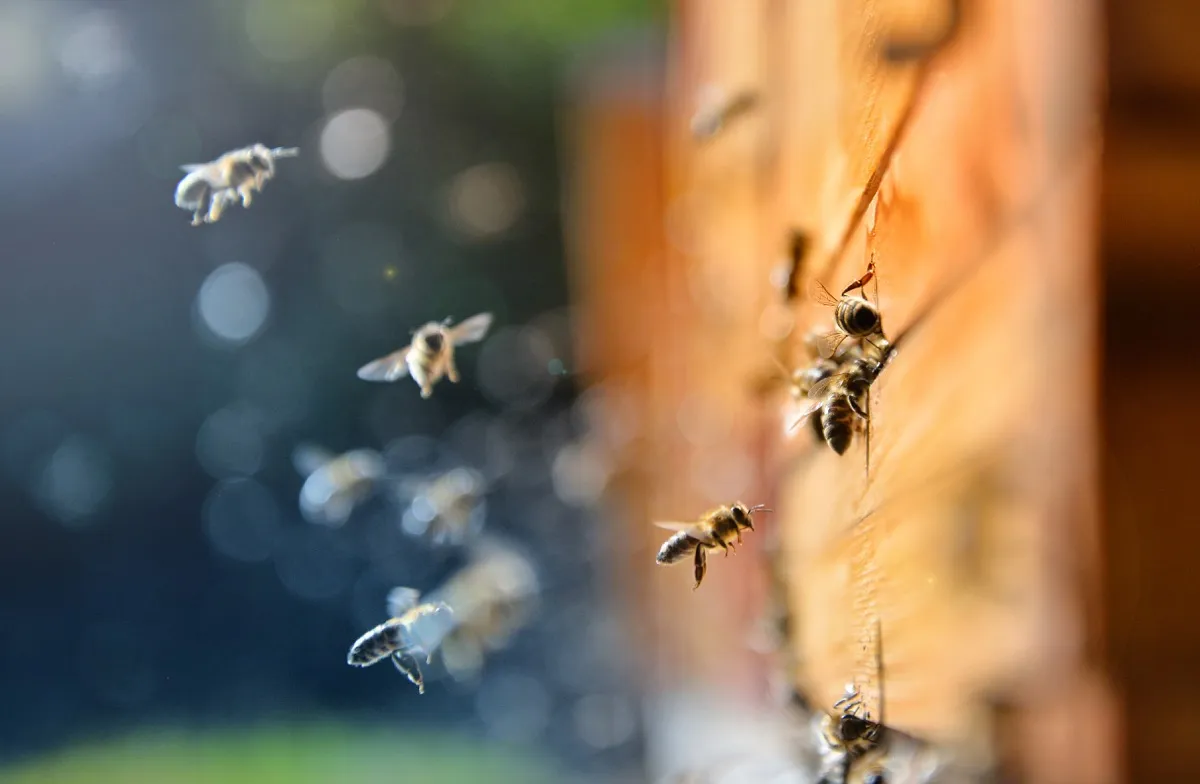
It certainly hurts when you get stung by a bee. But what’s even worse is having the creepy crawly creatures live inside of your eye. That’s what happened to a 28-year-old Taiwanese woman in 2019, according to the BBC.
While participating in the Qing Ming tomb-sweeping festival (which involves cleaning up the graves of relatives who have passed away), the woman thought a bit of dirt had gotten into her eye. But when her eye swelled up, she went to a doctor who found “something black that looked like an insect leg.” The leg was attached to a 4-millimeter-long bee—and it wasn’t the only one. The doctor explained, “I grabbed the leg and very slowly took one out, then I saw another one, and another and another.” There were four sweat bees in total—all were alive and had been feeding off of the woman’s tears.
22
You can spend the night inside a 28-foot-long, 12-foot wide potato.

The next time you’re looking for a unique getaway, forget about booking a room at a quirky hotel and instead consider spending the night in a giant potato. No, it’s not a real freakishly large potato. It’s a 28-foot-long, 12-foot wide structure in Boise, Idaho, that looks like one, but it’s made up of steel, plaster, and concrete. After being turned into a tiny apartment by the Idaho Potato Commission, it was put up on AirBnB where you can book it for $200 per night.
23
Jack Black’s parents are rocket scientists.

Jack Black has made a name for himself in Hollywood by playing goofy characters such as the slacker-turned-fake-substitute-teacher Dewey Finn in 2003’s School of Rock and a monastery-cook-turned-Mexican-wrestler in 2006’s Nacho Libre. But in real life, he’s the son of rocket scientists. The actor was born on April 7, 1969, in Santa Monica, California, to Tom and Judy Black, who were both satellite engineers. His late mother, also known as Judith Love Cohen, worked on missions and projects such as the Minuteman missile, the Hubble Space Telescope, the Tracking and Data Relay Satellite, and the Apollo Space Program.
24
The Andy Warhol Museum celebrated the artist’s birthday with a webcast from his gravesite.

Normal people tend to throw typical balloon-filled, cake-eating parties for their birthdays. But Andy Warhol certainly wasn’t a normal person. The pop artist, who passed away in 1987, was famous for pushing creative boundaries. That’s why, to celebrate the artist’s 85th birthday, the museum in his name set up a webcam to broadcast a stream that simply showed his grave to anyone who wanted to watch.
25
There are three different types of smiles.

No single emoji can really capture the diversity of the human smile. One 2017 study from the University of Wisconsin, Madison, found that people distinguish three basic types of smiles: reward (given as praise, for example, to a joke), affiliation (to show a bond between people), and dominance (to signify higher social status). Each of these smiles looks distinct and involves different aspects of facial symmetry, eyebrow lift, and lip-pulling.
26
A 1965 Barbie came with a diet book that advised readers not to eat… at all.
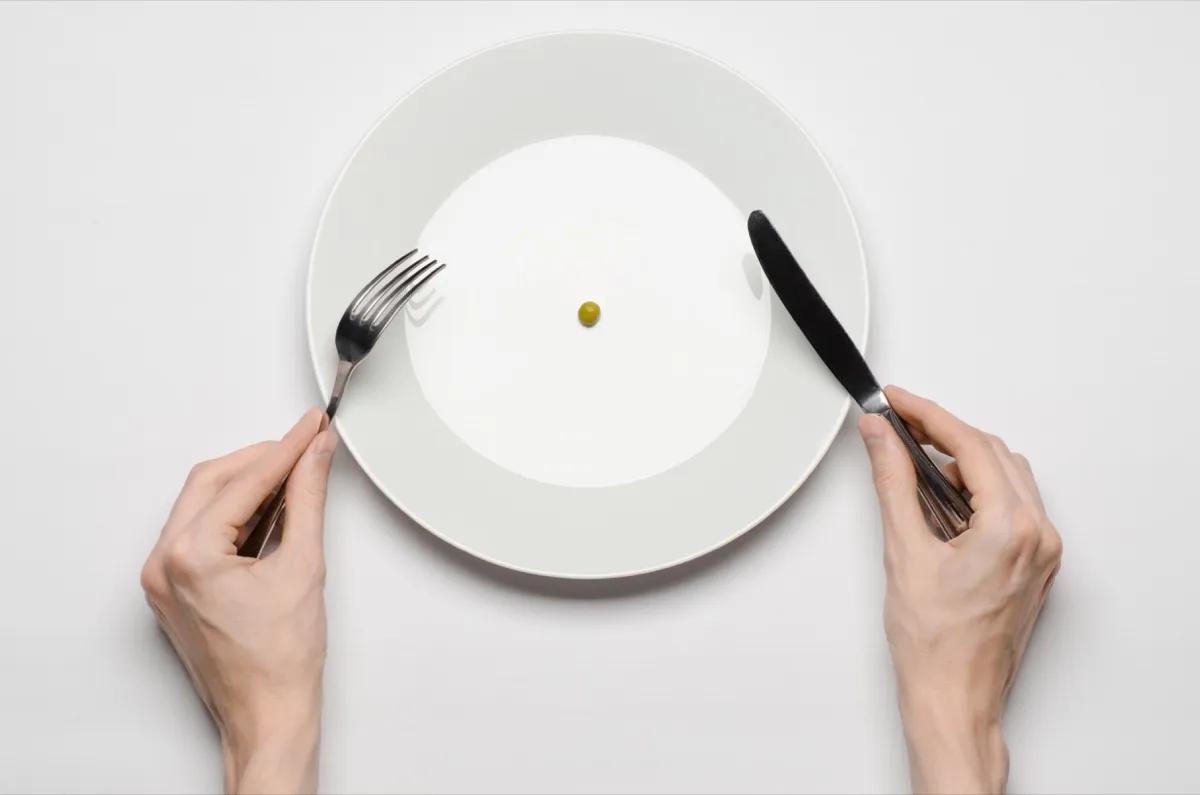
If you were in a kid in the ’60s, you might have been given a Slumber Party Barbie as a gift. But hopefully, you were more interested in the doll itself than the accessories that were included with it. Along with a scale that showed an unwavering weight of 110 lbs, there was also a diet book titled “How to Lose Weight” that had only one piece of guidance: “DON’T EAT!” So wrong.
27
The world’s tallest tropical tree is 330 feet tall and weighs more than a jetliner.

On the island of Borneo in Malaysia, there’s one yellow meranti that’s been deemed the world’s tallest tropical tree. Weighing more than a jetliner (which is around 180,000 pounds) and standing 330 feet tall, the view from the top is almost too stunning to describe. That’s what local climber Unding Jami found out when he scaled the tree to get the official measurement. “It was a scary climb, so windy, because the nearest trees are very distant,” he said in a press release. “But honestly the view from the top was incredible. I don’t know what to say other than it was very, very, very amazing.”
28
The U.S. Army tried to develop a telepathic ray gun in 1998.

While ray guns may sound like things that merely exist in old-school sci-fi films, the U.S. Army was apparently interested in their real-life usefulness. According to a 1998 report from the U.S. Army called Bioeffects of Selected Nonlethal Weapons via MentalFloss, the military was looking into how, with the use of microwaves, “this technology could be developed to the point where words could be transmitted to be heard like the spoken word, except that it could only be heard within a person’s head.” If the army can make the ray guns work, they could be used to “communicate with hostages” and “facilitate a private message transmission.”
29
A man tried to sell New Zealand on eBay.

People try to sell some unique, unusual, and downright weird things online. But in 2006, one man kicked the eccentric nature of the digital marketplace up a notch by trying to sell an entire country—New Zealand, to be exact—on eBay. A “prankster” from Brisbane, Australia, started with a price of $0.01 AUD and managed to get bids up to $3,000 before the item, er, the country was taken down from the site due to a violation of eBay’s policy.
30
The bumblebee bat is the world’s smallest mammal.
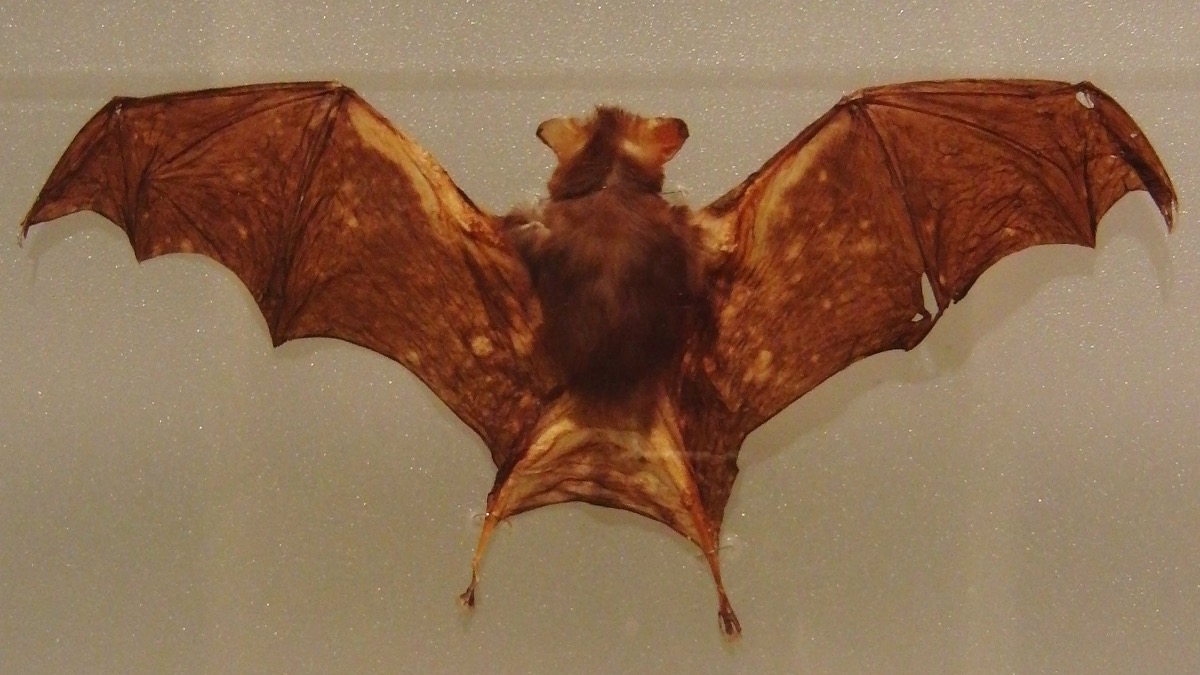
At just over an inch in length and less than one ounce in weight, Kitti’s hog-nosed bat, also known as the bumblebee bat, is the smallest mammal on the planet. As its name suggests, it has a pig-like snout for a nose, and its eyes are barely visible. These tiny creatures are found only in western Thailand and southeast Myanmar. Forest-burning practices in these areas have reduced the population significantly over the past few decades. It isn’t yet endangered, but it’s considered vulnerable with a downward trend.
31
A 1,500-year-old piece of fossilized human feces contained a whole rattlesnake.
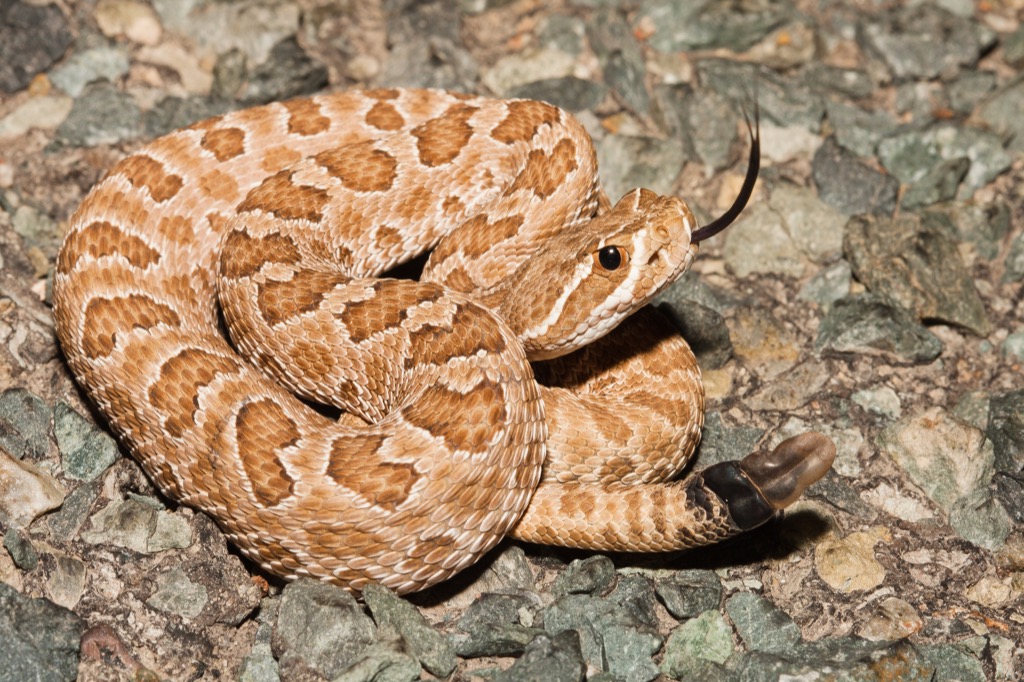
When researchers took a look at 1,500-year-old fossilized human feces that was found in the Lower Pecos Canyonlands of southwest Texas in the late 1960s, they discovered that it contained the body of an entire rattlesnake—11 rib bones, 11 vertebrae, 48 scales, and a fang. Those who studied the fossil don’t believe that dangerous reptile was eaten during a normal meal but was instead likely devoured during a ceremonial or ritualistic event, according to Smithsonian Magazine.
32
Until 2015, there was an Indian enclave that was a piece of India within a piece of Bangladesh within a piece of India within Bangladesh.

Yes, you read that right. But you might have to read it a few more times for it to actually sink in. According to Atlas Obscura, until 2015, the two-acre “geopolitical anomaly” called Dahala Khagrabari existed due to “messy … political border disputes” and was “owned by a Bangladeshi jute farmer who every morning, woke up in Bangladesh, walked over to India to farm his land, and returned home to Bangladesh at the end of the day.” Talk about a wild commute!
33
The oldest known star appears to be older than the universe.

An ancient star called Methuselah has baffled scientists due to the fact that the celestial body appears to be older than the actual universe. But now, there may be an explanation. Although previous research suggested the star was around 16 billion years old, despite the universe being a mere 13.8 billion years old, new numbers make a little more sense.
Howard Bond, the lead author of a 2013 study by Pennsylvania State University and the Space Telescope Science Institute in Baltimore, factored in information about the star’s distance, brightness, composition, and structure. As a result, he explained that he measured Methuselah at “an age of 14.5 billion years, with a residual uncertainty that makes the star’s age compatible with the age of the universe.” That uncertainty is plus or minus 800 million years, meaning Methuselah could be around 13.7 billion years old, which would make it slightly younger than the universe.
34
The largest cup of coffee was more than 18,000 liters.

Some people can’t function without their morning cup of coffee. However, no one could possibly consume the largest cup of coffee ever poured, which was a whopping 18,012.07 liters. Earning a world record in 2018, the coffee came in a cup that was 3.36 meters high and 3 meters in diameter. It took 22 people an entire month to make it!
35
A library in Anchorage lends out taxidermic specimens.

If you’ve been thinking about sprucing up your home with stuffed animals (not the toy kind) but aren’t sure that you’re ready to make a commitment to dead critter-themed décor, then perhaps you should check out the Alaska Resources Library and Information Services (ARLIS) on the University of Alaska Anchorage campus. There, you can check out a taxidermic specimen—such as a “perfectly preserved carcass of a ring-necked pheasant” or a “mounted black rockfish”—in the same way that you’d check out a book. Just make sure you have an Anchorage public library card.
36
A Noble Prize winner was given a lifetime supply of beer piped directly into his house.

In 1922, when Danish physicist Niels Bohr won the Nobel Prize, the Carlsberg brewery in Copenhagen, Denmark, decided to give him a house. But it wasn’t just any house—it was located right next to the brewery and had a pipe that brought beer directly into the residence.
While it might seem strange to award a scientist with beer, according to Forbes, “Carlsberg had a passion for science as part of its company culture. They had a laboratory devoted to developing better beer brewing. In 1875, that laboratory was the first to isolate Saccharomyces pastorianus, the species of yeast used to brew pale lagers. The laboratory also made discoveries in protein chemistry that ended up having applications elsewhere.”
37
Dialogue between Frodo and Sam for the Lord of the Rings was filmed a year apart.
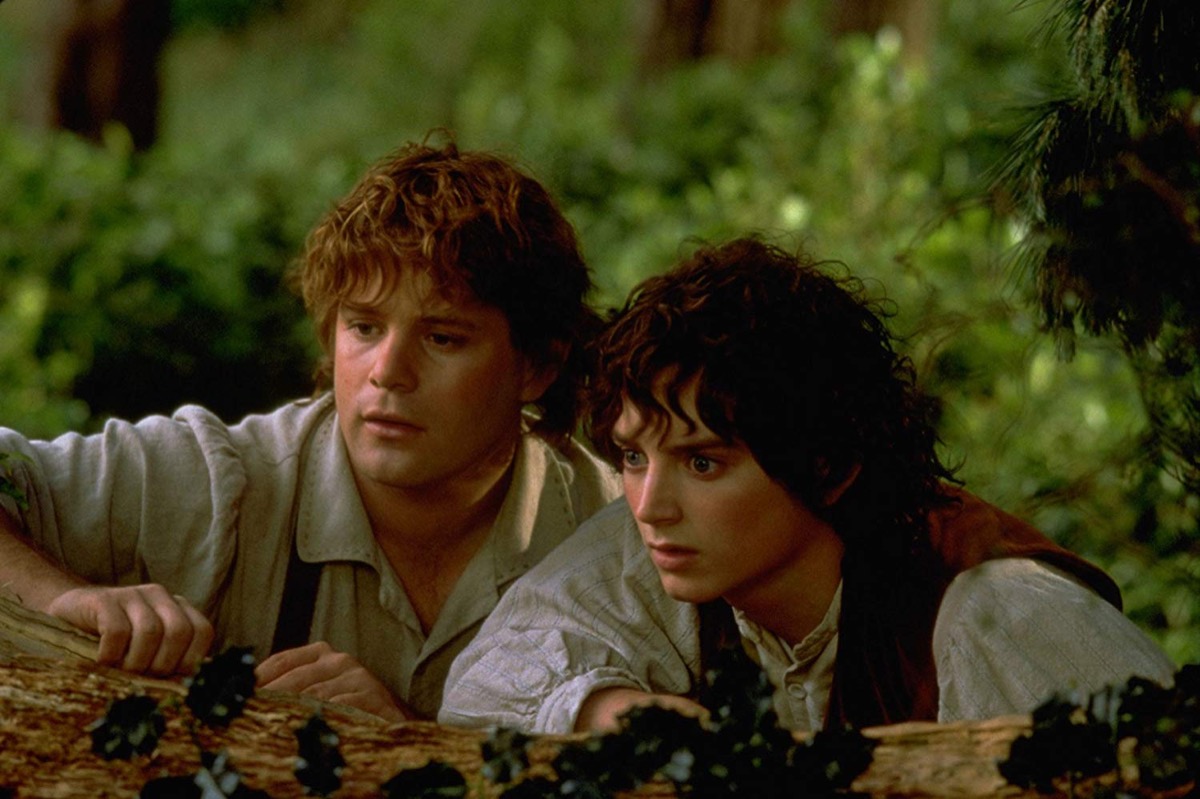
In The Lord of the Rings film franchise, Frodo (Elijah Wood) and Sam (Sean Astin) are particularly close. However, in one of their most emotional scenes, the two actors weren’t actually interacting with each other while filming. In fact, one performer’s part was shot a full year after the other.
The movies were filmed in one lengthy stretch, but the scenes were not shot consecutively—meaning the cast and crew may have been shooting a scene for the first film in the morning before working on one from the final film in the afternoon. And sometimes, they didn’t even film the same scene at the same time. That’s what happened with the scene between Frodo and Sam when the former is trying to force the latter to leave. According to the trilogy’s director Peter Jackson, “Every time we cut to and fro between Frodo and Sam we are actually jumping back and forth across a year-long gap.”
38
It’s against the law to build a sandcastle in Eraclea, Italy.

If you ever take a vacation to Eraclea, Italy, feel free to stretch out on the sunny beach and splash around the in water. But be sure to never to build a sandcastle, since that would be illegal, according to Reuters.
39
Tins of air were sold to commemorate the abdication of a Japanese emperor.

When Japan’s Emperor Akihito abdicated the throne in 2019 to let his son, Crown Prince Naruhito, take over, it was the first time that an abdication had taken place in Japan in 200 years. That’s why plenty of people were eager to take advantage of the opportunity to mark the momentous event, including those who were selling tins of air for 1,080 yen, or about $10 USD, to commemorate the hand over in rule and the end of the Heisei era.
40
Cannibal hares exist in North America.

We tend to think of bunnies as cute little creatures that nibble on carrots. But it turns out that there are hares that are not only carnivores, they’re also cannibals. According to research published in Northwestern Naturalist in 2018, snowshoe hares in Yukon, Canada, were observed eating the decaying carcasses of owls, lynxes, and even other hares. And apparently, those weren’t isolated incidents because when the findings became public, people around the world came forward to report similar behavior by both wild and domesticated rabbits.
41
Residents of a Canadian town wear respirator masks due to a toxic seafood sauce.
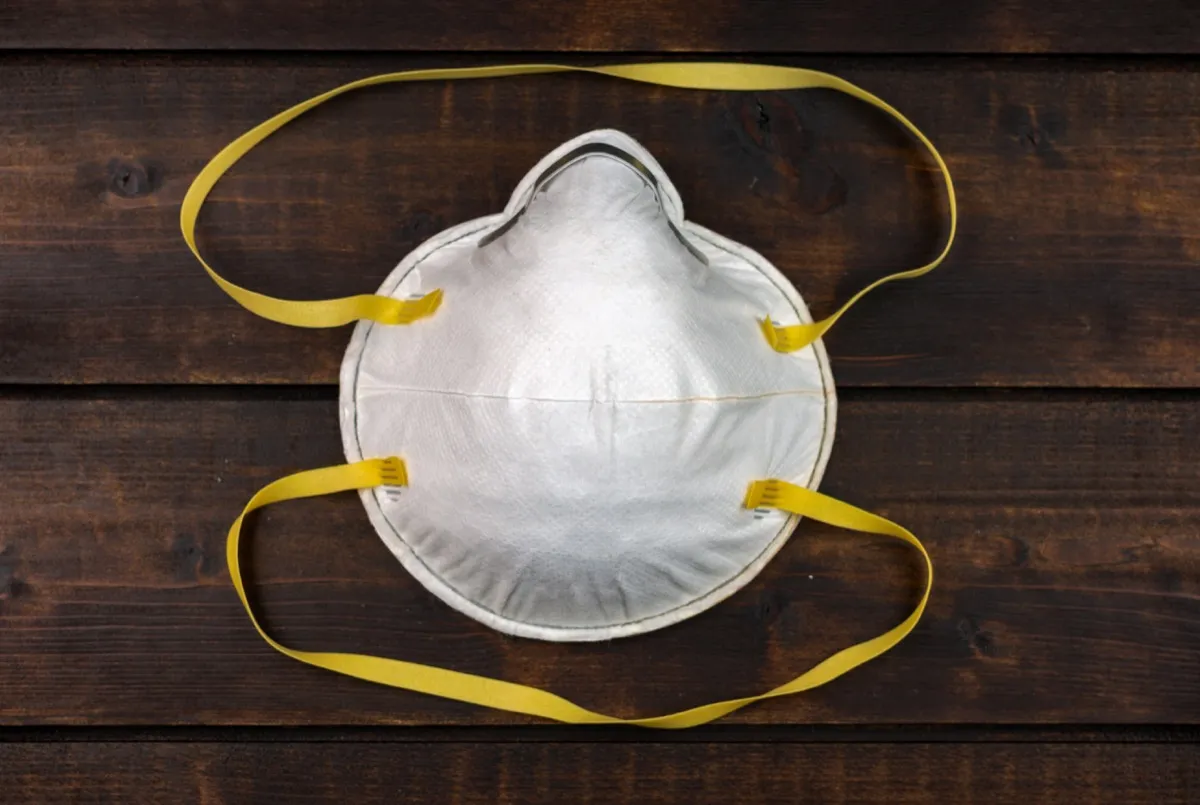
Plenty of people look forward to the warmer summer months, but for those living in the area of St. Mary’s, Newfoundland, summer brings with it an overwhelming stench. That’s because a factory that closed down years ago left behind vats of seafood sauce that rotted to the point of being potentially toxic. The smell that emanates from the abandoned factory is so bad that locals sometimes have to wear N95 respirator masks. Resident Muriel Whelan told the CBC, “When the smell starts I have to come in, close our windows and our doors, and stay in, like a prisoner.”
42
A man once ate an entire airplane.

In 1978, a French man named Michel Lotito began an unusual endeavor: He started eating a Cessna 150 airplane. Lotito developed an unusual tolerance for eating dangerous objects when he was nine-years-old due to a condition known as pica, which leads to an appetite for non-nutritive items. It took him two years to complete his metal-filled meal—he finished consuming the last of the airplane in 1980.
43
Doctors found a tooth growing inside a man’s nose.
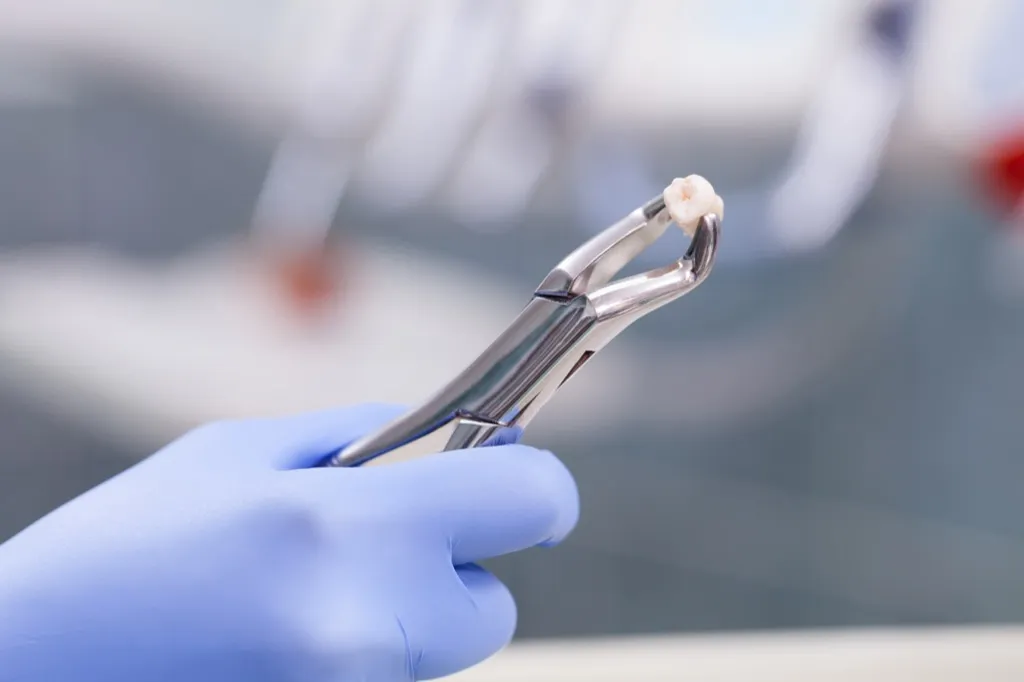
When a 59-year-old man showed up at the University Hospital Aarhus in Denmark after suffering from congestion and a runny nose for two years, doctors found something unexpected: a tooth. According to IFL Science, the doctors “noticed [the patient’s] septum (the cartilage bridge in the middle of the nose) was bent to the left and there appeared to be a mass lodged in his nasal cavity.” When they conducted a scan, it “revealed that the blockage was caused by an intranasal tooth that had erupted inside his nose.” The mass was removed during surgery and after a short bout of antibiotics and nasal saline irrigation, the man’s nose was tooth-free.
44
Hippos are an invasive species in Colombia.
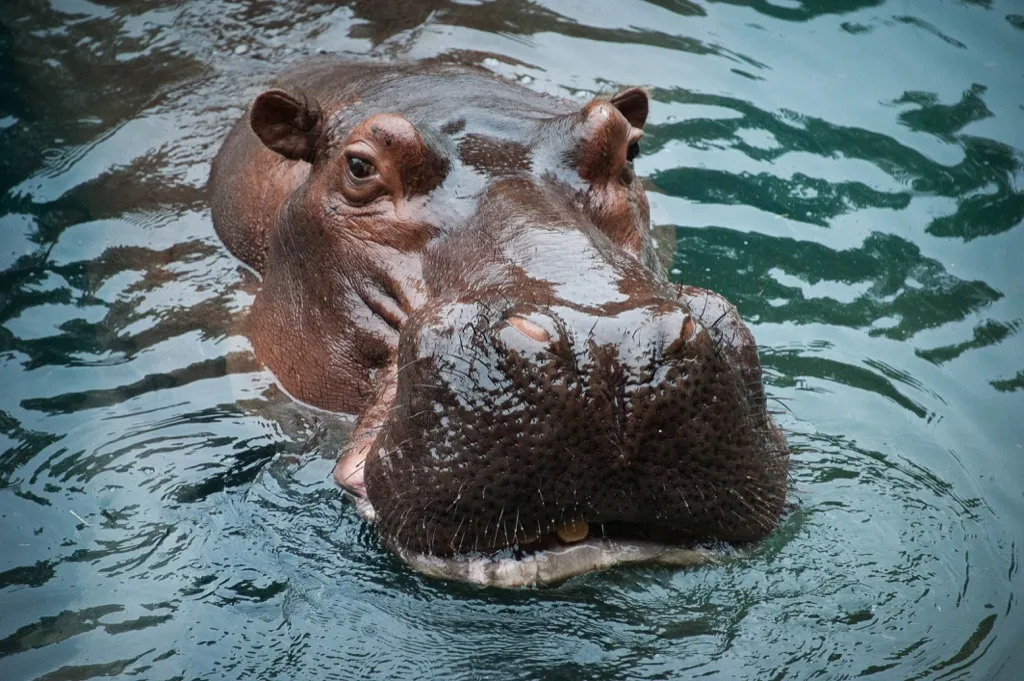
Before his death in 1993, drug kingpin Pablo Escobar built himself an expansive estate in his home country of Colombia. This included a personal zoo, and when the government took over his property, they had no way to move his four hippopotamuses, so they just… left them there. In the 25 years since, the herd has expanded to dozens of hippos.
Conservationists differ as to whether the hippos, which have taken up residence in the main river, present a danger to local ecosystems or are a suitable replacement for the large animals that lived in South America before they went extinct. “The charisma of the hippos and the fact that they are such celebrities creates quite the complex situation,” David Echeverri, a researcher with the Colombian government’s environmental agency, old National Geographic.
45
Boeing uses potatoes to improve their in-flight Wi-Fi.

Because humans can’t sit for days at a time while Boeing tests their in-flight Wi-Fi systems, the company uses something a bit more unusual to mimic the conditions of people being on a flight: potatoes. According to USA Today, the vegetables make the ideal stand-ins because of their “water content and chemistry [which] absorbs and reflects radio wave signals the same way humans do.”
46
Missouri has a highway pickle mystery that’s been going on for years.

Since 2012, drivers in the Des Peres area of Missouri have found themselves in a pickle. For years, a random jar of what appears to be Nathan’s kosher spears sat on a barrier along a highway off-ramp connecting I-270 North to Manchester Road.
Barb Steen, who lives nearby, told Atlas Obscura, “Every day for six years, I brushed my teeth, I got in my car, and I looked for pickles.” She says that through all kinds of weather as well as construction and protests that temporarily shut down the highway, “the pickles remained. Like there was some aura around it or something, protecting it.”
47
Hippopotomonstrosesquippedaliophobia is the fear of very long words.

If you have a fear of very long words, then you might have hippopotomonstrosesquippedaliophobia, which describes a “social phobia” of long words. Of course, it’s ironic that it’s one of the longest words in the English vocabulary.
48
Benjamin Franklin wrote an essay called “Fart Proudly.”
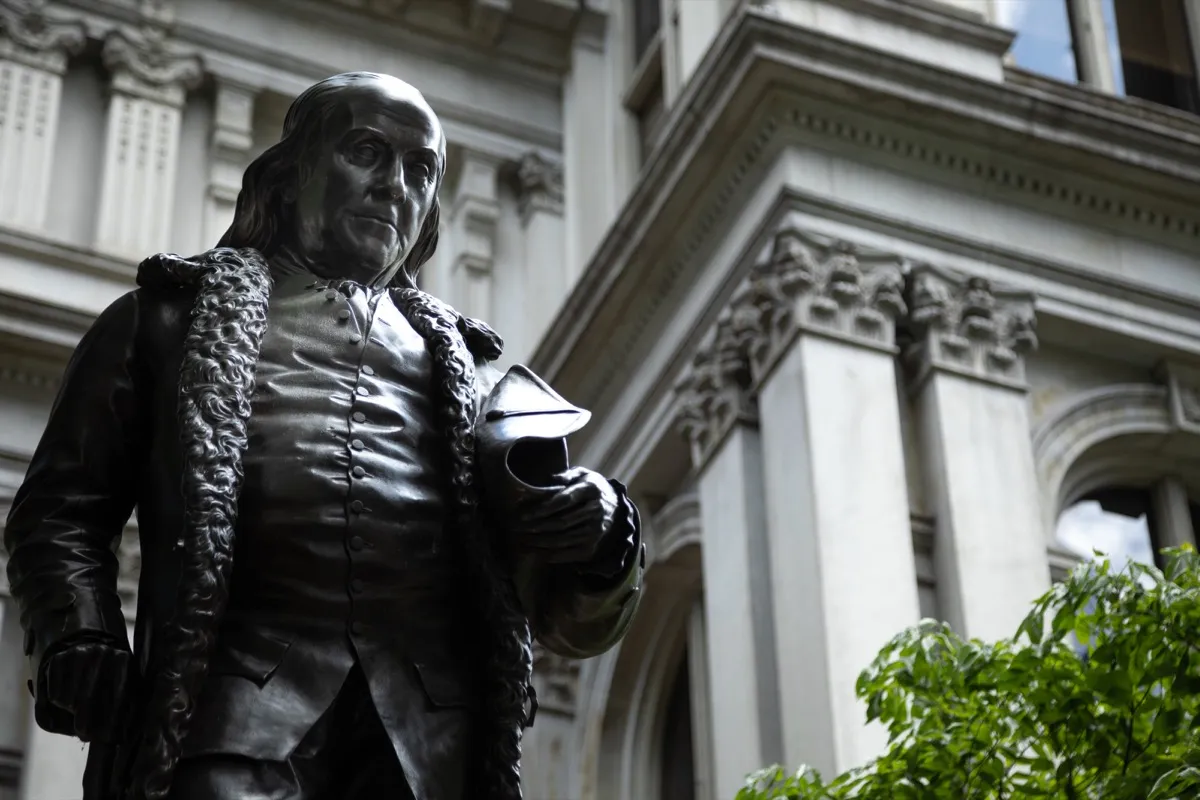
Benjamin Franklin was responsible for many impressive accomplishments as an inventor and politician. But he was also a writer who penned essays such as 1781’s “Fart Proudly.” Seriously. In it, he wrote, “It is universally well known, that in digesting our common food, there is created or produced in the bowels of human creatures, a great quantity of wind. That the permitting this air to escape and mix with the atmosphere, is usually offensive to the company, from the fetid smell that accompanies it.” His essay urged the Royal Academy of Brussels to try to discover “some dug wholesome & not [disagreeable], to be mix’d with our common food, or sauces, that shall render the natural discharges of wind from our bodies, not only inoffensive, but [agreeable] as perfumes.”
49
Cats can be allergic to people.
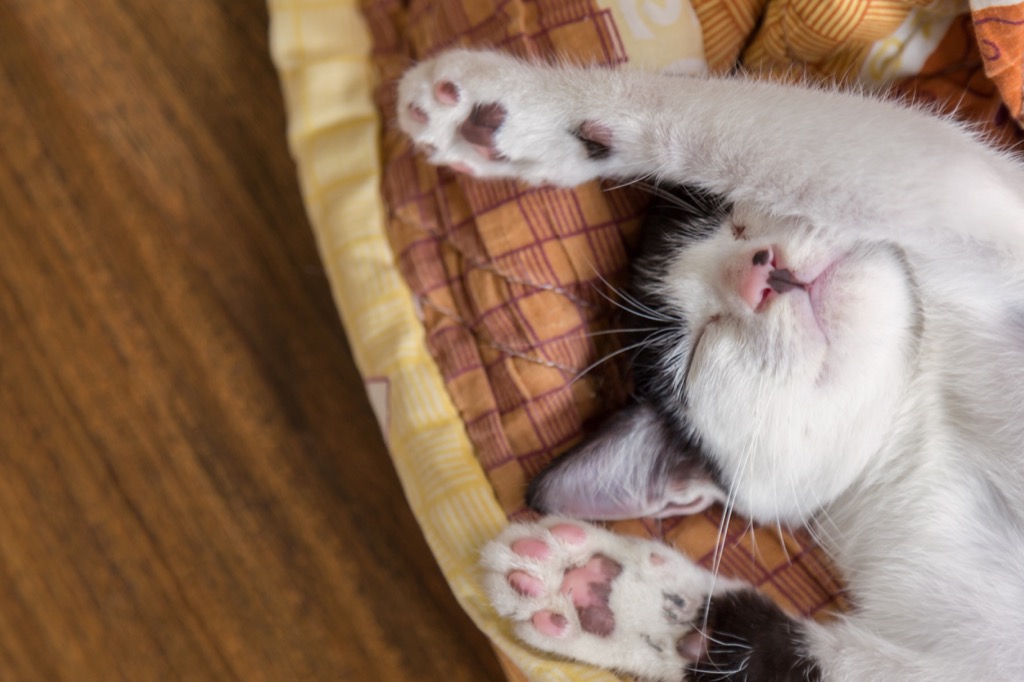
Some people’s immune systems react badly to cats. A little bit of fur can provoke a runny nose, itchy eyes, sneezing, and even a rash. However, cats have allergies, too. They can have allergic reactions to other pets like dogs and birds or, in rare cases, to their human owners. Since we (hopefully) bathe more often than our furry friends and don’t shed so much hair, feline allergies to people usually develop in response to chemicals like detergent, soap, or perfume. If you change brands and that still doesn’t help, though, you may need to give your cat antihis(ssss)tamines.
50
It’s illegal to die in one Scandinavian town.
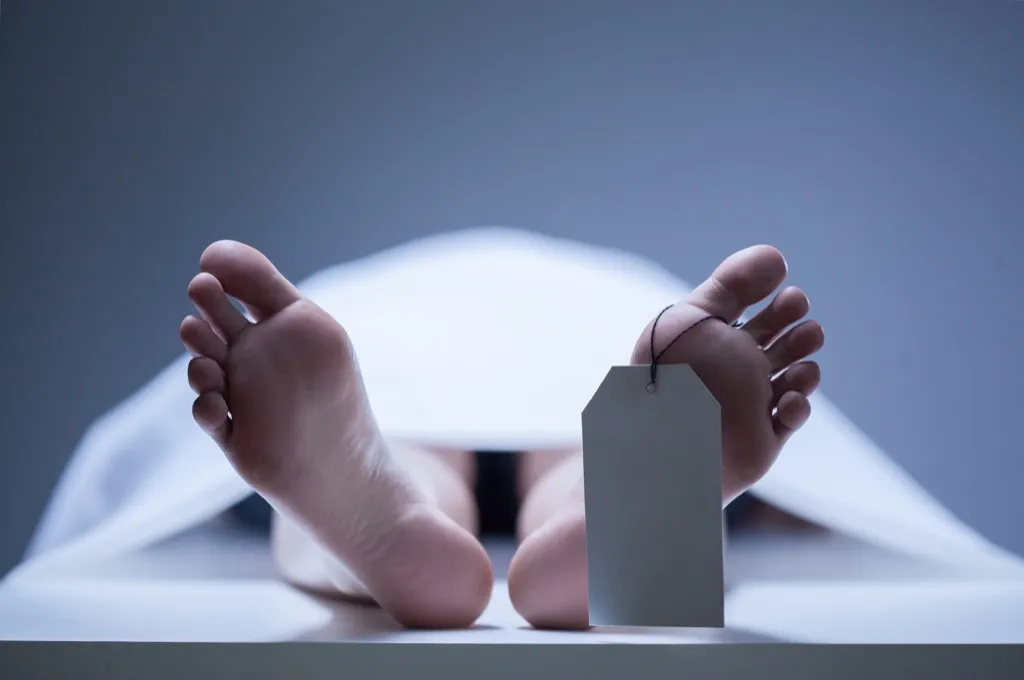
Off the coast of mainland Norway, about halfway to the North Pole, lies the Svalbard archipelago. It’s so far north that it’s completely dark for four months out of the year, and it’s so cold that anything buried in the ground doesn’t decompose. For example, in 1998, scientists extracted a live sample of the 1918 flu virus from buried bodies. Because of this, the 2,000-person town of Longyearbyen has made it illegal to die or be buried there. Instead, people nearing the ends of their lives must fly to the Norwegian mainland.
51
Scarecrows were once known as hobidy-boobies.
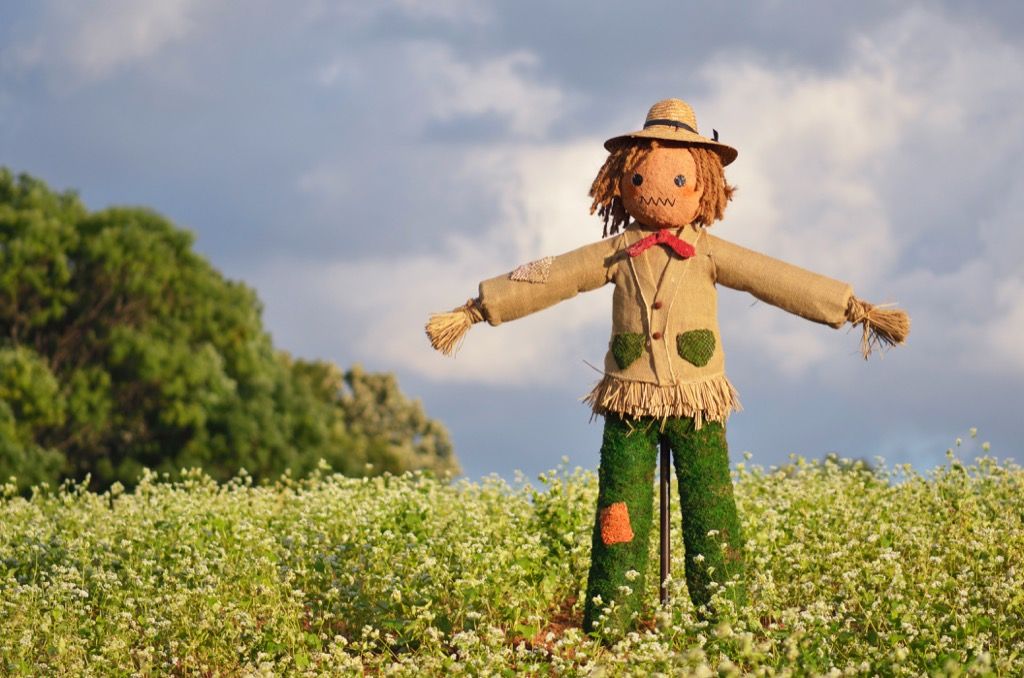
Scarecrows have a perfectly apt name considering their job is to scare crows—and other birds—away from crops. But according to linguist Paul Anthony Jones, once upon a time, scarecrows were known by another seemingly strange (and grin-worthy) name: hobidy-boobies.
52
Snow White almost co-starred with Burpy the dwarf.
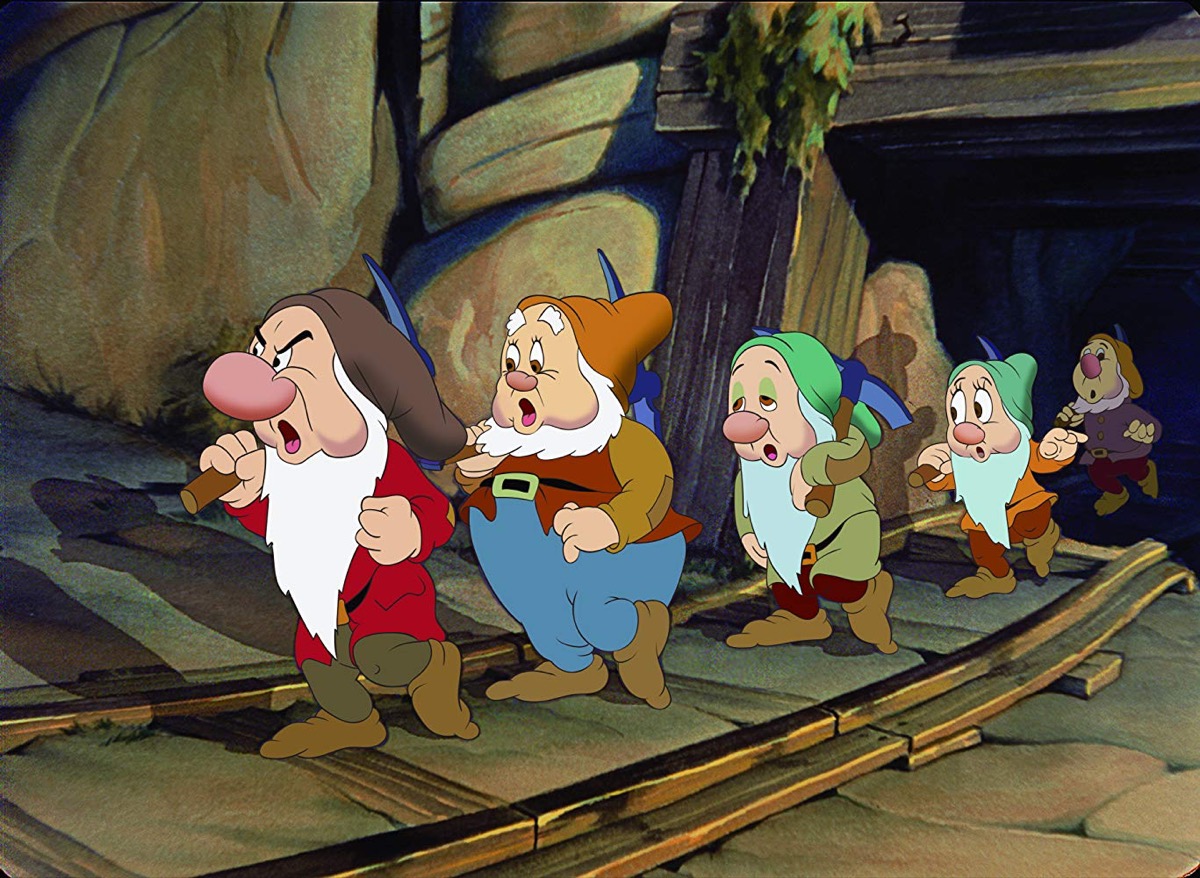
Snow White and the Seven Dwarfs as we know it came from a German fairytale that’s been around for centuries. The dwarfs were always an important part of the story, but they didn’t have individual names (apart from one stage adaptation) until Walt Disney came along. However, Happy, Grumpy, Sleepy, Sneezy, Bashful, Dopey, and Doc weren’t the only names the writers considered. According to The Guardian, we could have had dwarfs named Jumpy, Burpy, Puffy, Stuffy, Lazy, Wheezy, and the cringe-inducing Deafy.
53
Caffeine makes food taste less sweet.

Do you like to have a pastry with your morning coffee? Us, too. But a 2017 study published in the Journal of Food Science shows that we all might be missing out on some sugary goodness. While caffeine dulls your brains receptors to hormones that cause sleepiness, it also dulls your perception of sweetness. That can lead you to underestimate the true amount of sugar you’re consuming—either in the coffee itself or as a side dish—or even cause sugar cravings. The solution? Try decaf a few times a week. That same research showed that participants couldn’t tell the difference between regular and decaf.
54
3 Musketeers candy bars used to contain three bars.

The original 1932 version of the 3 Musketeers bars contained three separate candy bars in one wrapper: one was full of chocolate nougat (like the bar today), while the other two contained vanilla and strawberry nougat.
However, during World War II, American candy makers had to work around sugar rations, and the Mars Corporation decided to focus on their most popular flavor: chocolate. (No surprise there.) In recent years, however, they’ve released limited-edition flavors from time to time.
55
The Sun-Maid Raisins Girl was an actual model.

Sun-Maid Raisins has been using the same logo on their packaging since 1916: a young woman with curly brown hair tucked under a red bonnet, holding a tray of grapes. This image was inspired by real-life model Lorraine Collett (later Peterson), who was working as a seeder and picker for a California fruit packing company when a Sun-Maid executive spotted her now-iconic bonnet. In addition to lending her image to the company, she was hired to promote their product, once even dropping raisins from a plane as it flew over San Francisco, according to NPR.
56
We almost had a Billy Possum to go with our Teddy Bears.

You may have heard that the teddy bear was named for Teddy Roosevelt, the 26th president of the United States, who reportedly refused to shoot a wounded bear. The invention of the teddy bear coincided perfectly with the rise of mass manufacturing in the toy industry, and the bear’s creators made off like bandits. When the 27th president, William Howard Taft, began his term, toymakers sought to make a similarly-popular plushie out of a meal he enjoyed in Atlanta: “possum and taters.” Needless to say, “Billy Possum” was not as big of a hit as Teddy Bear.
57
The longest dragon boat ever was almost the same length as the height of the Statue of Liberty.

In November 2018, the Union of Youth Federations of Cambodia (UYFC), Prey Veng, and the Prey Veng Provincial Administration came together to build the longest dragon boat ever. Made with timber from Koki msoav trees and using traditional methods that go back to when dragon boats first originated more than 2,500 years ago, the boat measured 286 feet and 5 inches, which is nearly as long as the height of the Statue of Liberty.
58
Rhesus monkeys can see the man in the moon.
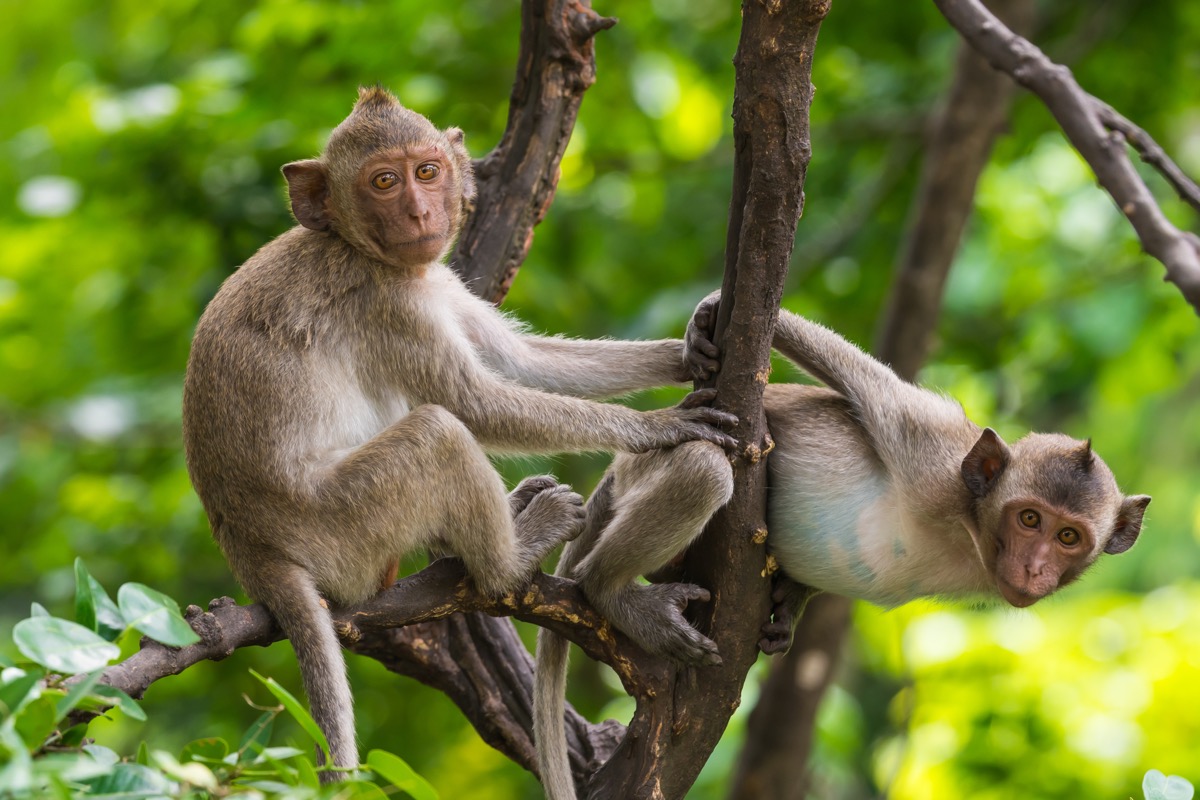
If you’ve ever seen a “face” in the features of a building or the wood grain of a door, you’ve experienced pareidolia: the illusion of seeing facial features in inanimate objects. As it turns out, humans aren’t the only ones who have this ability. Rhesus monkeys do, too. According to one 2017 study published in Current Biology, they act similarly to human infants presented with a picture of, for example, a fruit or vegetable that appears to have a face. Scientists hypothesize that this ability helps monkeys—just as it helped our human ancestors—detect potential hidden dangers.
59
A woman once sued Quaker Oats because her Crunchberry cereal wasn’t made of real fruit.

America has a bit of a reputation as the land of frivolous lawsuits, and it’s hard to argue when you hear about cases like this one. In 2009, a California woman sued Quaker Oats, the makers of Cap’n Crunch’s Crunchberry cereal, for tricking her into believing that it contained real fruit. There is a law stating that a company’s advertising can’t be “likely to deceive a reasonable consumer.” But the judge didn’t find her case to be reasonable. The court ruled that, as “crunchberries” aren’t real and since the box lists the ingredients, the cereal packaging wasn’t deceptive.
60
Thinking in a second language leads to better decision making.

While you might assume that you’d need your native tongue to fully comprehend all aspects of a problem, one 2018 study published in Psychological Science found that thinking it over in a different language might actually improve your rationality. Using a non-native language, no matter what it is, requires you to be deliberate in your word choice and less reactive to emotionally charged words, giving you a more accurate ability to perceive risk. The effect even extended to bets, with participants who considered the rationality of the bet in a second language more likely to take the more profitable option.
61
Your dog might have “Frito feet.”

Dog owners often encounter a number of unusual odors emanating from their beloved pets, but there’s one, in particular, that’s described as smelling like “corn chips or old popcorn.” Since it tends to come from their paws, it’s been nicknamed “Frito feet.” The good news is that it’s rarely an indication of a problem—it’s simply a yeasty smell given off by bacteria that naturally live on a dog’s paws. Regular bathing and trimming fur between your dog’s foot pads will cut down on foot sweatiness and thus that weird corn chip odor.
62
You’re more likely to win an Olympic gold medal than the lottery.

The odds of picking the correct numbers in the Mega Millions are one in 302.6 million. For comparison, your odds of winning an Olympic gold medal are just 1 in 662,000, according to Forbes.
63
The current American flag design earned a bad grade.

For anyone under 60, the American flag has always had the same iconic design: 50 stars and 13 stripes. However, the United States didn’t include 50 states until Hawaii joined in 1959, necessitating a new flag design. High schooler Robert G. Heft submitted such a design as part of a class assignment, and though he wasn’t the only one to suggest the alternating rows of five and six stars, he was the only one who actually sent in a prototype. President Dwight D. Eisenhower chose Heft’s flag to become the official national symbol—but his teacher only gave it a B-.
64
Uncooked rice isn’t actually bad for birds.

This urban legend even had Ann Landers urging couples not to give out rice to throw at their weddings, asserting it was dangerous for birds to eat. The rumor states that uncooked rice, particularly instant rice, will expand in birds’ stomachs, killing them. However, rice must be boiled before it can expand, and birds eat plenty of uncooked, wild rice anyway, according to Snopes. So, rice won’t harm birds, but it might harm your wedding guests if they slip and fall, and the venue might charge you extra for the difficult cleanup.
64
Belgium once employed trained cats to deliver mail.
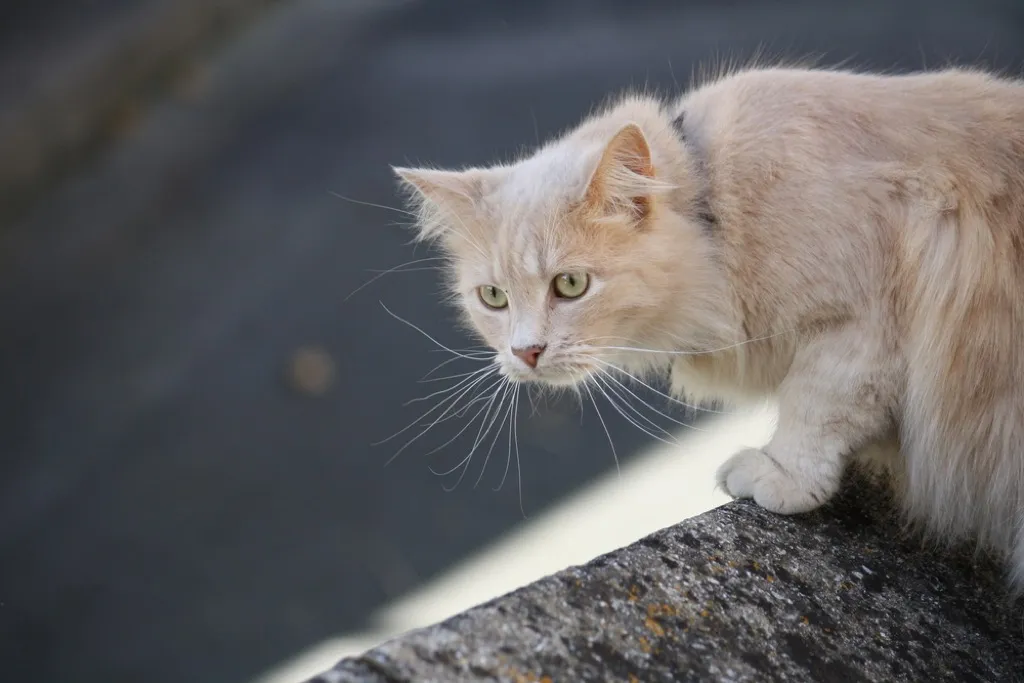
In the 1870s, the city of Liège in Belgium hit upon the idea of using domestic cats as mail carriers. They trained 37 such cats, fastening messages to their collars in waterproof bags and sending them throughout the city, The New York Times reported. It worked about as well as you’d expect: The fastest cat delivered its cargo in five hours, but most took a full day to reach their destinations. There’s a reason we don’t use Kitty Express.
65
A baseball fan was hit twice by consecutive foul balls.

There’s more protection for spectators these days, but every baseball fan knows there’s still a small chance of a foul ball flying your way. During one Phillies-Giants game in 1957, Richie Ashburn fouled off a ball into the stands that smacked Alice Roth right in the face, breaking her nose. As the medics led her out in the stands, Ashburn hit another foul ball off the very next pitch—hitting Roth once again, in the leg this time. Fortunately, she recovered, and the Phillies treated her and her family, per reports, “like royalty.”
66
An ancient Egyptian mummy has a modern-day passport.

When Pharaoh Ramses II died in 1213 B.C.E., his priests moved his body frequently from tomb to tomb to stave off grave robbers, so his mummy was in pretty bad shape by the 1970s. However, the reigning experts in mummy preservation lived in France, and the Egyptian authorities worried that the Europeans would simply keep the mummy. (Anyone who’s visited the British Museum knows this isn’t an idle fear.) To give Ramses II some legal protection, Egyptian authorities issued him a passport, listing his occupation as “King (deceased).” Fortunately, he was returned to Egypt safely and well-preserved.
67
Some lily pads can support the weight of a small child.

Lily pads seem like delicate things, floating across the surface of the water, and many of them are. Even the Victoria amazonica, the world’s largest lily pad, is very susceptible to puncture if you drop a sharp object into it. However, because of the leaves’ spectacular size—up to 3 meters, or 9.8 feet—if you distribute weight evenly across the Victoria lily pad, it can support up to 71 pounds. In this hypothetical situation, you’d need to lay a sheet of plywood across it first, but then you could set a young child on it as though it were an inflatable raft.
68
The verb “unfriend” is 350 years older than Facebook.

While most of us would interpret the word “unfriend” as a verb meant to indicate that someone has severed an internet relationship, the word itself was first used in the 1200s to describe someone who was no longer a friend. By the 17th century, however, “unfriend” had become a verb that meant essentially the same thing it does today, minus the internet. In 1659, Thomas Fuller wrote: “I hope, sir, that we are not mutually un-friended by this difference which hath happened betwixt us.”
69
John Wilkes Booth’s brother saved the life of Abraham Lincoln’s son.

If they put it in a movie, you’d never believe it: Robert Todd Lincoln was saved from a gruesome train accident by the brother of the man who would later assassinate his father. Lincoln the younger, traveling to D.C., ended up on a crowded train platform. He pressed himself against the train to let other people pass, but when the train began to move, he fell between the train and the platform. He might have been squashed if not for then-famous stage actor Edwin Booth, who pulled Lincoln up by the collar and back onto the platform.
70
Catnip repels mosquitos.
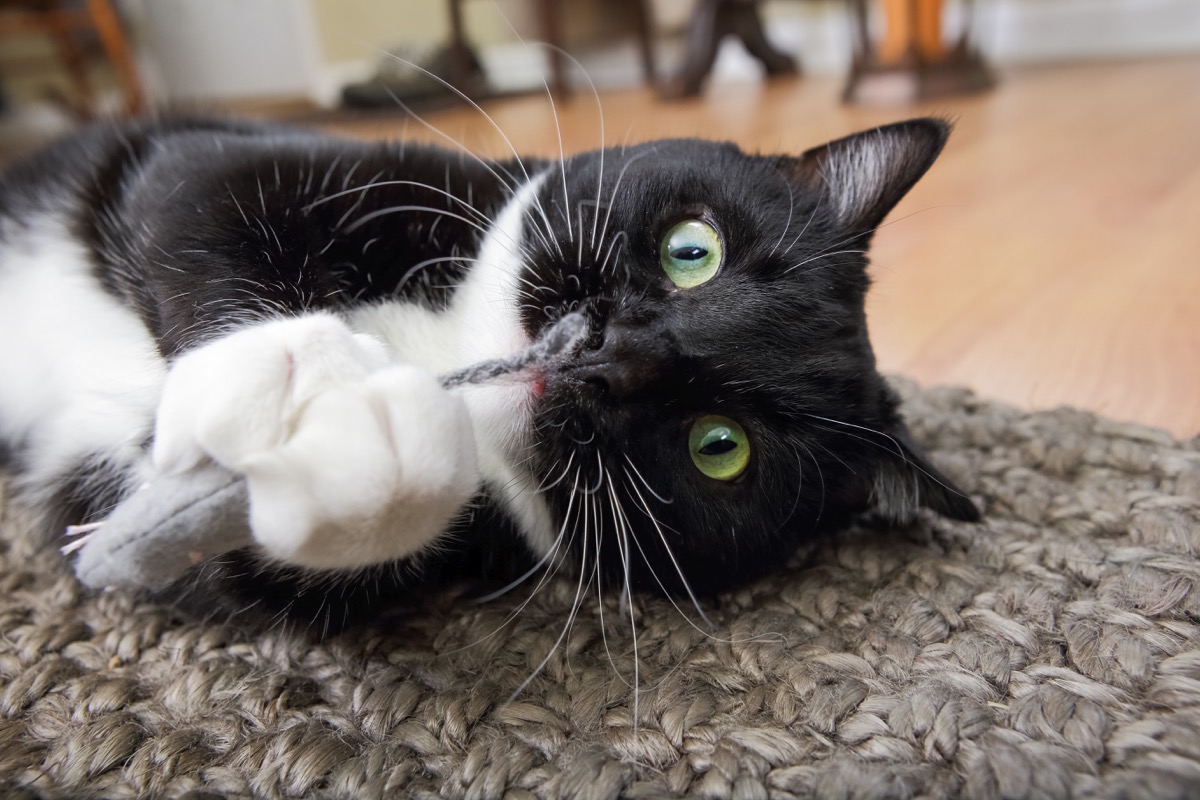
Though you may experience some difficulty wrestling it away from your cat, catnip contains an essential oil that is 10 times better at repelling mosquitos than the active ingredient in commercial bug repellent. At high doses, catnip repels 49 to 59 percent of mosquitos, while DEET (diethyltoluamide) repels only about 10 percent at the same dose. The problem with catnip oil, or nepetalactone, is that it loses potency quickly and is difficult to grow commercially. But researchers at Rutgers University are currently trying to develop new strains of the plant to fix these issues and potentially create a better bug spray.
71
One man created half of today’s routine vaccines.

The current recommended vaccine schedule for children includes 14 different vaccines spread out over childhood (and longer, in some cases). A single scientist named Maurice Ralph Hilleman is responsible for an astonishing 8 of those 14 vaccines: measles, mumps, hepatitis A and B, chickenpox, meningitis, pneumonia, and a strain of bacteria called Haemophilus influenzae. He also discovered that chlamydia was caused by a bacterium, not a virus. You’ve probably never heard his name, but he’s likely saved the lives of more children than any other single person in history.
72
MIT students can become certified pirates.

If you’re an undergraduate student at the Massachusetts Institute of Technology, you’ve worked hard to get there, and you finally have a chance to fulfill your dream: becoming a pirate. Though the university doesn’t offer a full major in piracy, if you pass courses in sailing, fencing, pistols, and archery, you can receive a certificate asserting your status as a scourge of the high seas. While the status was unofficial for nearly as long as the school has offered all the classes, MIT made it official in 2012, offering documentation to aspiring Anne Bonnys and Edward Teaches.
73
There’s a lake in Australia that’s bright pink.
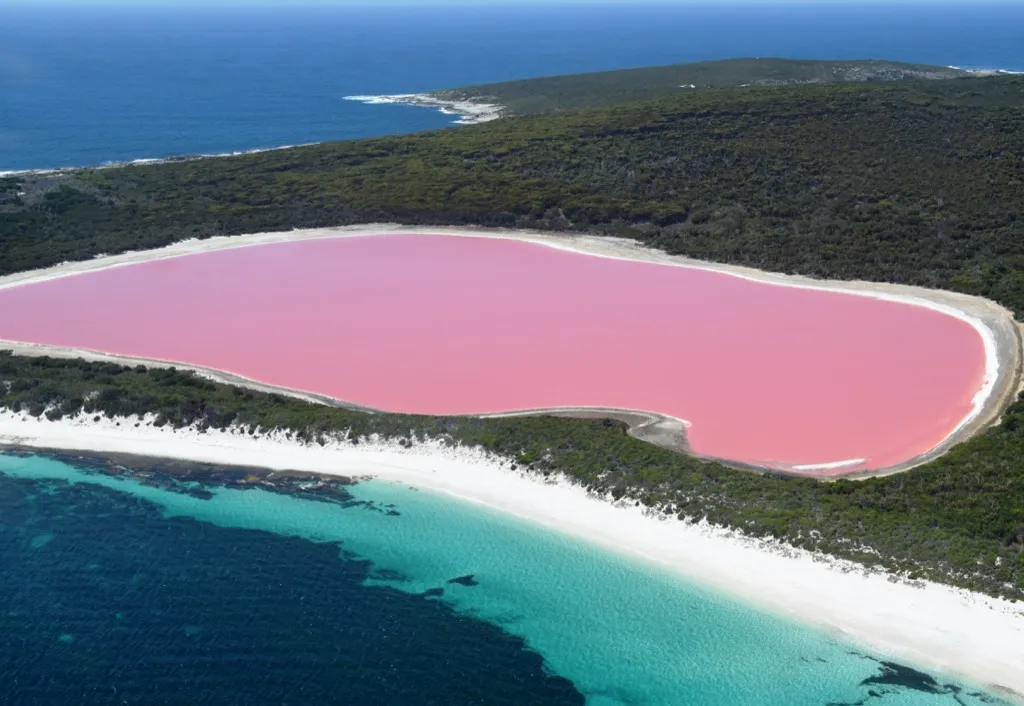
No matter how bad you are at geography, you’ll be able to identify Western Australia’s Hillier Lake by sight. That’s because the water in the lake is an unmistakable pink. Scientists aren’t entirely sure why it’s pink, but they suspect that a combination of microalgae in the water and bacteria in the salt crust form the color. Though the lake is too salty to support any life bigger than algae, it’s safe to swim in. But you have to be quite a dedicated swimmer, because the island is only accessible by airplane or cruise ship.
74
Spiked dog collars once protected sheepdogs from wolves.

Before they became part of punk and goth fashion in the 1980s, dog collars with protruding spikes actually served an important purpose. Though the Ancient Egyptians were the first to put collars on dogs for domestication purposes, Ancient Greeks added the spikes. They would put these spiked collars on their herding dogs before sending them out into the fields so that any attacking wolves couldn’t get a hold of their necks or throats. So, the spikes protected the dog, and the dog protected the sheep.
75
The world’s first business computer calculated bakery receipts.

Though it seems inconceivable that any contemporary business could operate without the aid of computers, this practice has barely been around for 60 years. It was actually an English tea shop called J. Lyons & Co. that first used a computer for business purposes. The LEO (Lyons Electronic Office), unveiled in 1951, was the size of a large room and could calculate sales, invoices, supplies, orders, and payroll. It’s rather remarkable that the owner of a restaurant and catering business with no electronics experience had the foresight to invest in such an innovative machine.
76
Jellyfish keep clogging up power plants.
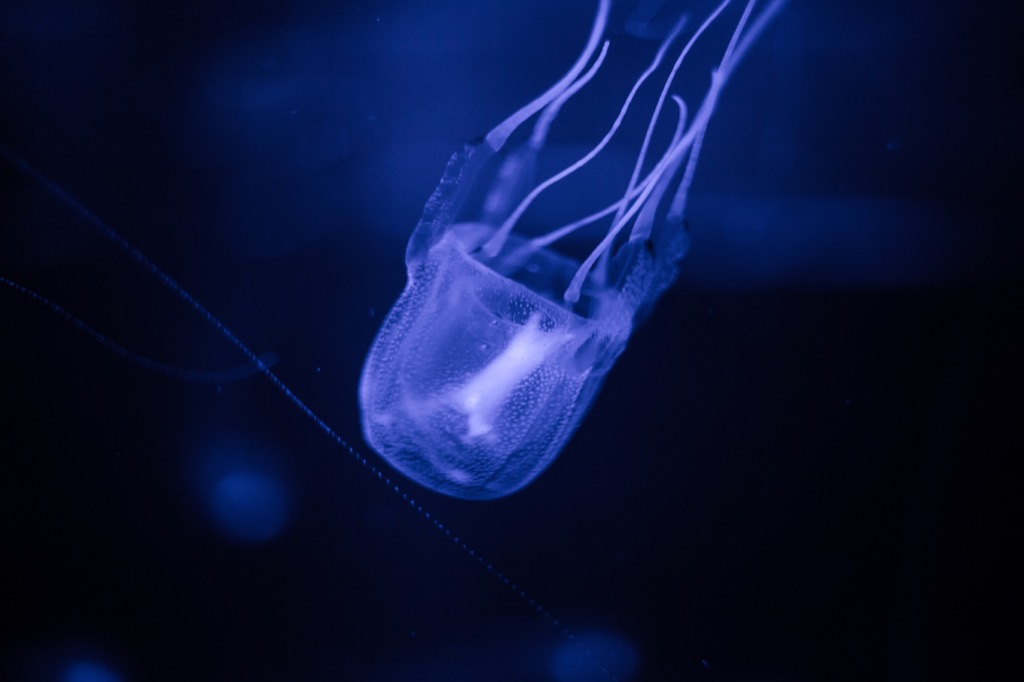
Power plants have a surprising but extremely numerous marine opponent: jellyfish. Nuclear, gas, and wind plants alike require a large amount of water to cool their machinery, and the only source for that much water is the ocean. However, jellyfish blooms around oil platforms and wind farms in the ocean mean that sea water isn’t the only thing the cooling pipes are pulling in. Power plants in Scotland, Sweden, Japan, the Philippines, Israel, and the United States have all experienced jellyfish-related clogs in the last few years.
77
May 29th is “Put a Pillow on Your Fridge” day.

Um, why? Well, it can’t hurt. Before refrigerators, some Europeans and Americans practiced the tradition of once a year sticking their linens in their pantry or larder as a way of inviting wealth and good luck to the home. This superstition has updated with the times, so now placing your pillow atop your fridge on the designated day each year (May 29th) should fulfill the requirement. (If you have the space, you could also try cramming the pillow in your fridge, though we have yet to determine whether or not this brings any extra luck.)
78
A lightning strike can form a tree shape on your skin.

The scientific name for the branching, tree-like shape of a lightning bolt is a Lichtenberg figure, a pattern that can be found wherever electricity discharges through non-conductive matter. Sometimes, this pattern imprints on insulating materials like acrylic or wood, but it can also form on human skin. Some people who have been struck by lightning develop a rash in the shape of a tree where the bolt hit, bursting capillaries in the path of the electricity. Though the rash will fade, the person will bear the lightning’s signature on their skin for good. So that whole Harry Potter lightning-bolt forehead thing was actually based in science!
79
The tea bag was invented by accident.

Though many of us associate all things tea with the British, the portable tea bag was a purely American invention. Before 1908, tea only came in loose leaf form and needed to be steeped in a metal diffuser to brew. However, when a New York tea merchant sent out samples of his tea in small silk bags, some of his customers assumed that the bag could take the place of the diffuser—so they just dunked the whole thing in boiling water. The Brits turned up their noses at this American practice—until after World War II, when the portability factor won them over.
80
You can invent a 60-watt lamp without electricity.

Since it refracts sunlight, you can only use this Moser lamp (named for its creator, Alfredo Moser) during the day, but it can be a boon for simple homes without electricity. All you need to do is fill a 2-liter plastic bottle with water, and add a little bleach to prevent algae from growing. You then drill a hole in your roof to access sunlight, but if you insert the bottle and then seal the opening, the room below will get about 60 watts of illumination while the sun is out.
81
A man survived getting hit by a train going 110 miles per hour.

In 2013, a Michigan man named Darryl See was walking along a set of train tracks, listening to music so loud that he didn’t hear the oncoming train. The Chicago-bound train hit See straight-on at 110 mph, throwing him 20 feet, breaking bones, and crushing some of his vertebrae. Amazingly, though, he survived, needing surgery only to put a plate in his neck. The 22-year-old reportedly remembers nothing about the accident, and lifelong train engineers claim they’ve never seen anyone survive this kind of accident before.
82
There’s an earthquake-proof cathedral made of cardboard.

In 2011, the city of Christchurch in New Zealand was struck by a massive earthquake. Many of the city’s oldest buildings were destroyed, including Christchurch Cathedral. Anglican leaders wanted to create a temporary structure until something more permanent could be built, so they commissioned a Japanese architect who specializes in earthquake-proofing to design the building primarily out of cardboard. It’s supported by timber and steel, but, should another earthquake hit, this Transitional Cathedral is flexible enough to remain standing. It was the first major structure to go up as part of the city’s rebuilding efforts.
83
Male pufferfish create “crop circles” to attract mates.
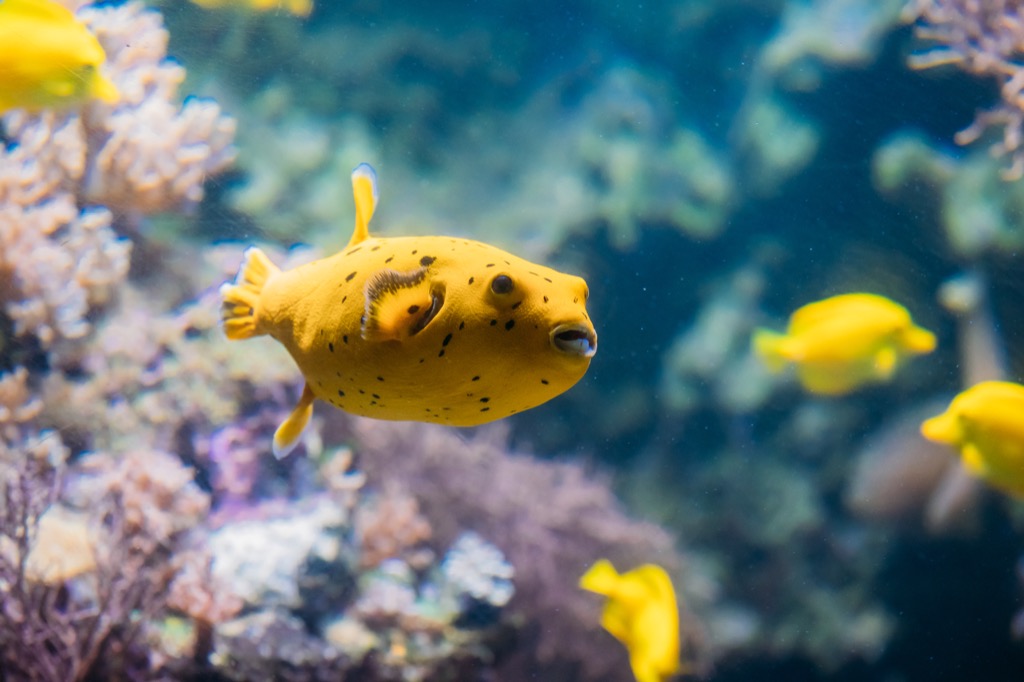
Around 1995, marine biologists began to notice a phenomenon off the coast of Japan—crop circles, seven feet in diameter, on the ocean floor. Their source remained a mystery for 16 years, when a research team finally observed one of these Spirograph patterns being created by… a 5-inch-long pufferfish. It seems male pufferfish shape the circles over the course of seven to nine days, using their fins to move sand around and decorate the peaks with shell fragments. We still don’t know the exact criteria the female pufferfish use to judge these sculptures, but color us impressed.
84
Charles Darwin ate one of every animal he found.

Primarily known for his theory of evolution gleaned from observing animals in the Galapagos, Charles Darwin was not only a scientist, but an extremely adventurous eater. He belonged to his university’s “Glutton Club,” which prided itself on eating the strangest meats its members could find. Later, on his voyages on the HMS Beagle, he sampled, among other things, puma, armadillo, iguana, giant tortoise, and lesser rhea. His favorite was an unnamed rodent, probably an agouti, which he described as “the very best meat I ever tasted.”
85
A dead jockey once won a horse race.

Poor Frank Hayes wasn’t even really a jockey—he was a stable hand who sometimes filled in during races. On June 3, 1923, he won his first—and last—horse race. At some point while riding the 20-to-1 longshot Sweet Kiss, Hayes suffered a heart attack and died. However, the horse finished first and Hayes’ body was still mounted on the saddle, so Sweet Kiss was declared the winner. Hayes, who was only 22, had been required to drop 10 pounds of water weight in the previous 24 hours, so it’s possible that dehydration and weakness proved to be a lethal combination.
86
There’s an active volcano in Colorado.

In the heart of Colorado, about 50 miles west of Denver, lies the Dotsero volcano, a 2,300-foot long beast that once produced a lava flow that stretched for two miles. It is indeed active… depending on how you define the term. In the technical, geological sense, any volcano that has erupted in the past 10,000 years is considered active, and Dotsero last spewed lava about 4,200 years ago. However, minus a catastrophe the size of an asteroid strike, it’s in no real danger of erupting today.
87
The guy who sings “Pretty Fly (For a White Guy” has a PhD.

When punk band The Offspring released their album Smash in 1994, it became a huge hit, and lead singer Dexter Holland stepped away from his postgraduate education to focus on his music. Neither his professors nor his mother was very happy about it, but even as he toured with the band over the next decades, the “Pretty Fly (for a White Guy)” singer kept chipping away at his classes. Finally, in 2017, now-Dr. Holland completed his dissertation on “the molecular dynamics of HIV and general virus/host interactions.” It’s never too late to finish your education!
88
Flushing the toilet after 10 p.m. is illegal in Switzerland.

If you’re in Zürich, Geneva, or Bern and need to use the toilet late at night, that’s totally fine. Go ahead and do your business. Just don’t flush when you’re done! That’s because it’s illegal to flush the toilet after 10 p.m. in Switzerland. However, landlords can apparently interpret the law as they wish, so you might not end up in jail if you wake up to use the washroom in the middle of the night and are too sleepy to remember that flushing is forbidden.
89
Astronauts come back to Earth taller.
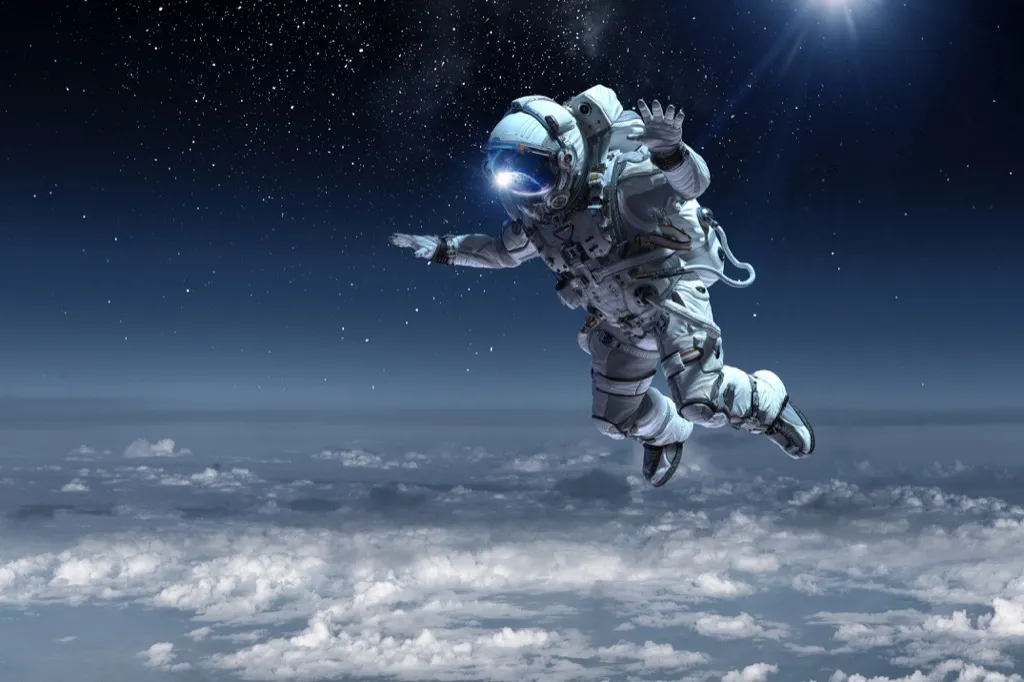
Human bodies can do some unusual things when you free them from gravity. For example, without the weight of their bodies compressing the cartilage in their joints and spines, astronauts’ bodies actually lengthen slightly in zero-G conditions. As a result, they come back to Earth a few inches taller, though the effect will disappear over time.
Amazingly, laying down for a good night’s sleep down here on planet Earth can have a similar effect. Though the difference is slight—usually no more than 1 cm—you’re a little bit taller when you first get out of bed in the morning than you are at night.
90
A coffee taster’s tongue is insured for more than $13 million.

Costa Coffee might not be a household name in the United States, but in the United Kingdom, it’s one of the most profitable coffee brands. It’s so profitable, in fact, that the brand’s head taste tester, Gennaro Pelliccia, has insured his taste buds with Lloyds of London for the princely sum of £10 million (which is about $13 million). To put that in perspective, Lloyd’s insures Bruce Springsteen’s voice for only £3.5 million.
91
Tuskless elephants are evolving in response to poaching.
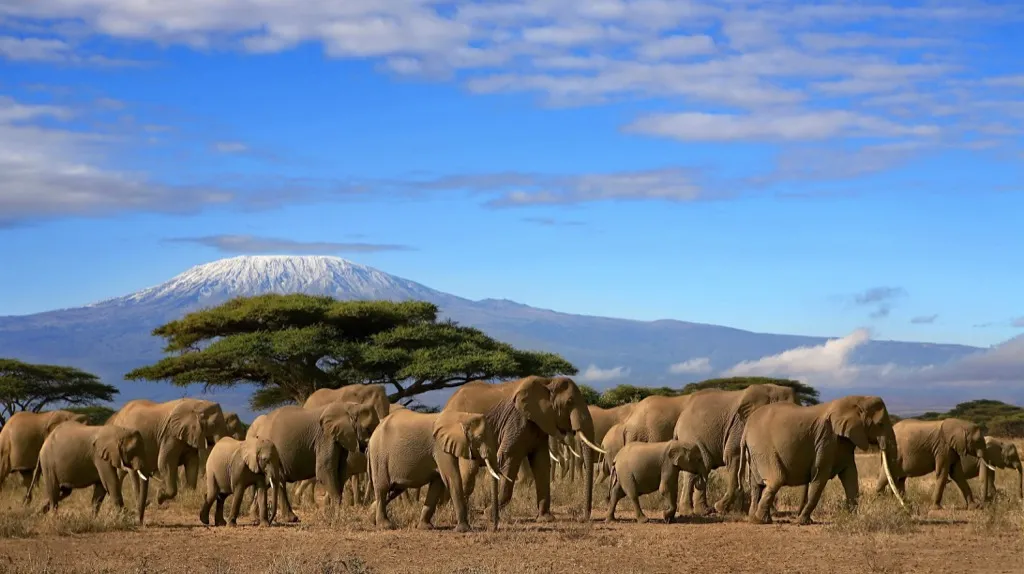
When a certain trait allows an animal to survive better in its environment, more offspring who share that trait will be born. In the case of elephants, those who’ve survived African poachers are those born without tusks, so they’re the ones left to reproduce. The percentage of tuskless female African elephants has grown from around 3 percent to as high as 51 percent in Mozambique. Unfortunately for these animals, tusks aren’t just ornamental—elephants use them to build habitats and dig for water. So a tuskless generation could severely change broader elephant behavior.
92
Medicinal whiskey prescriptions put Walgreens on the map.

When Prohibition went into effect in the United States in 1920, Walgreens Pharmacies numbered only 20—hardly a nationwide chain. However, there were a precious few legal ways to procure alcohol during that time, and a doctor’s prescription was one of them. Doctors could make some extra money on the side by prescribing “medicinal” whiskey to their patients, and Walgreens was one of the few places that kept it in stock. By the end of the 1920s, there were more than 400 Walgreens stores across the country.
93
Medieval Italians fought a war over a bucket.

Medieval Italy wasn’t a unified country; it was a collection of rival city-states that rarely got along. Bologna and Modena were two such neighboring city-states that supported opposing political factions. Tensions had been simmering for decades, occasionally breaking out into border clashes, when in 1325, some Modenese soldiers snuck into Bologna and stole a bucket from the main city well. The resulting War of the Bucket had only one battle, the Battle of Zappolino, but Modena was the victor. Nearly 700 years later, the bucket remains there still.
94
“Buttock-mail” was a tax people once had to pay for having sex outside of marriage.

Getting frisky before your wedding day was a big deal centuries ago. That’s why in 1595, Scotland introduced “buttock-mail,” which is a cheeky term for a Scottish Poor Law tax that people had to pay if they had sex outside of marriage.
95
There are hundreds of billions of websites on Google.

According to the search engine, “Before you search, web crawlers gather information from across hundreds of billions of webpages and organize it in the Search index.”
96
Your sense of touch fades as you age.

David Linden, a neurobiologist at Johns Hopkins University, spoke to Vox about the effects of aging on our sense of touch. “It seems as though we all lose touch receptors over the course of our lives,” he said in 2015. “It’s not like we have them until a certain age, then they suddenly disappear—we lose them very, very slowly. They peak around age 16 or 18, then disappear slowly.”
97
The letter “E” used to signify a failing grade.

Everyone knows that the letter “F” on a test means you failed. But have you ever wondered why the scores go “A,” “B,” “C,” “D,” and then skip “E” and go straight to “F”? Turns out, in the earliest record of a letter-grade system, which was implemented at Mount Holyoke College in Massachusetts in 1897, an “E” used to mean you failed. But just one year later, it was changed to an “F.” That’s because some professors worried that students would think “E” stood for excellent, whereas “F” more clearly meant “fail.”
98
At -40, the temperature is the same in both Fahrenheit and Celsius.

Seriously, we promise! You can check out the math here. And despite the fact that you now know this fact, we hope you never have to use it.
99
A pound of quarters and a pound of dimes are essentially worth the same amount.

And that amount is about $20. A dime weighs 2.2268 grams and a quarter weighs 5.670 grams. That means that a pound of dimes would be roughly 200 dimes, or $20, and a pound of quarters would be roughly 80 quarters, or $20.
100
Underwater rugby is an international sport.
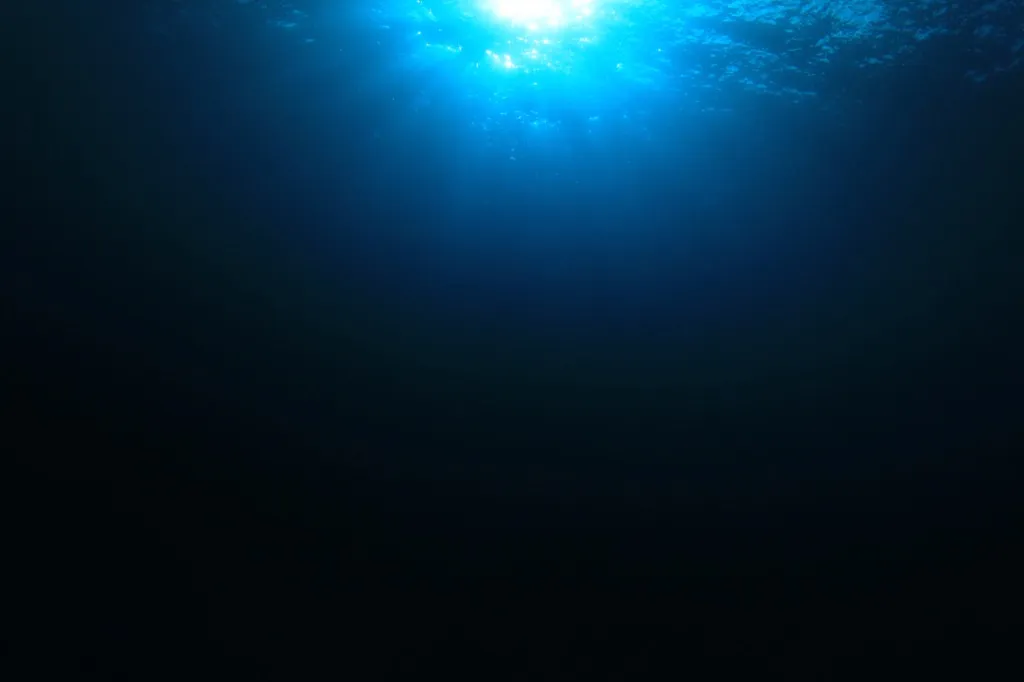
If you’ve got 11 athletic friends and access to a pool, why not try underwater rugby? You’ll need a ball full of saltwater (so it doesn’t float) and a pair of heavy buckets. Divide into two teams of six and pass the ball to your teammates in any direction, but don’t let it come out of the water. Dunk it in your team’s bucket to score a point. Since its invention in 1961 in Germany, underwater rugby has become a world sport, with a governing body featuring members from 21 countries, including the United States. And for more mind-blowing trivia, check out 30 Facts You Always Believed That Aren’t True.
To discover more amazing secrets about living your best life, click here to follow us on Instagram!